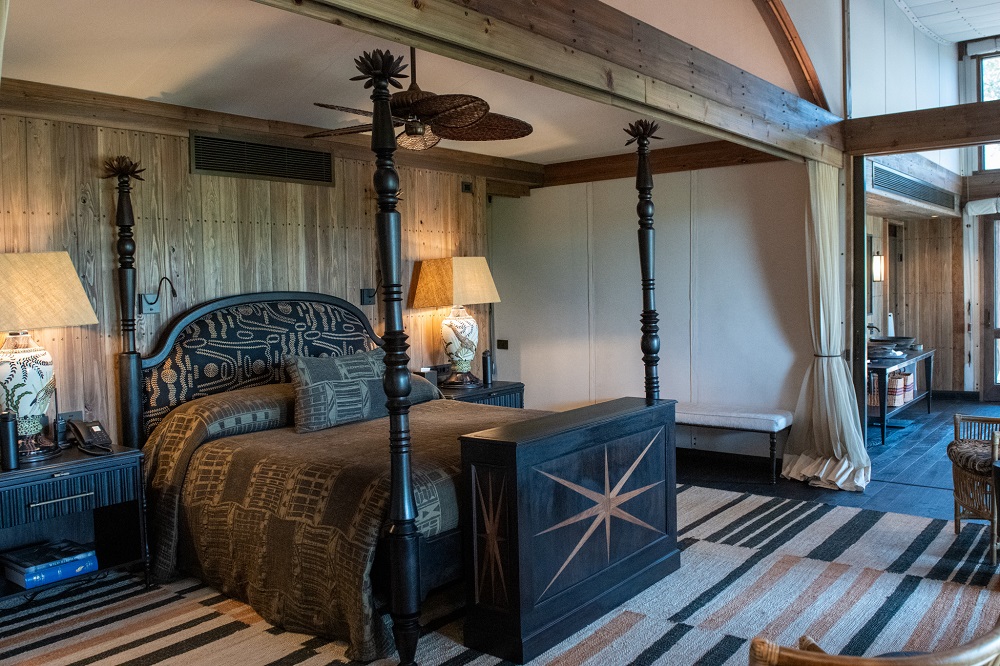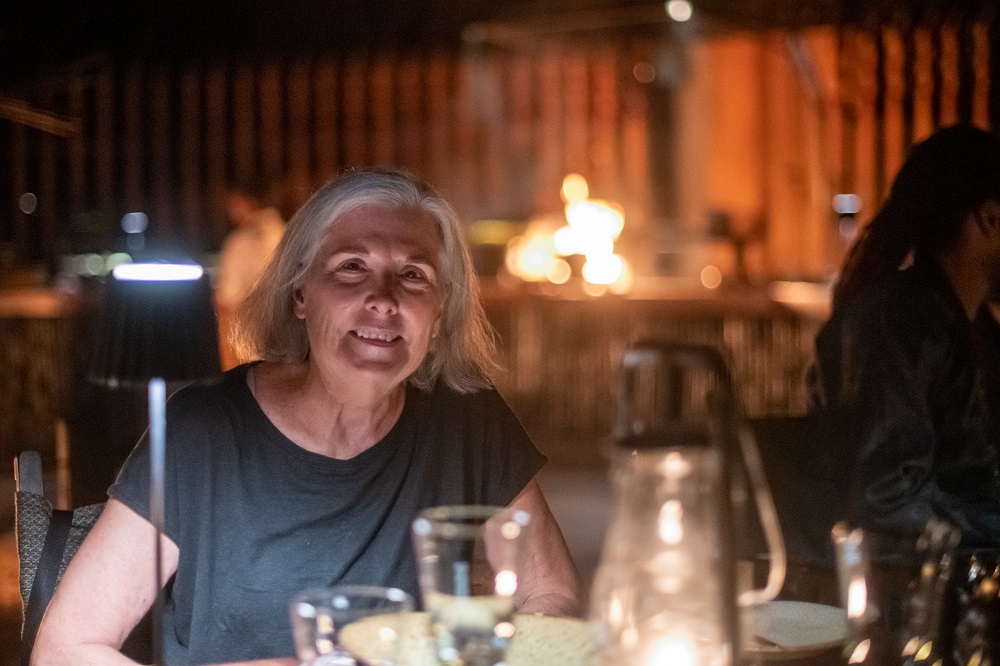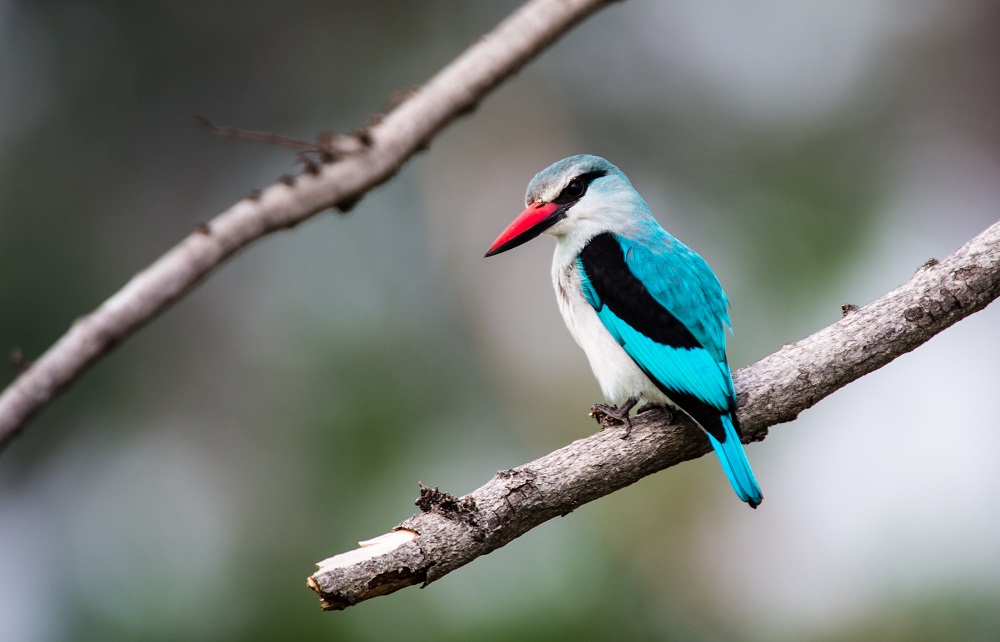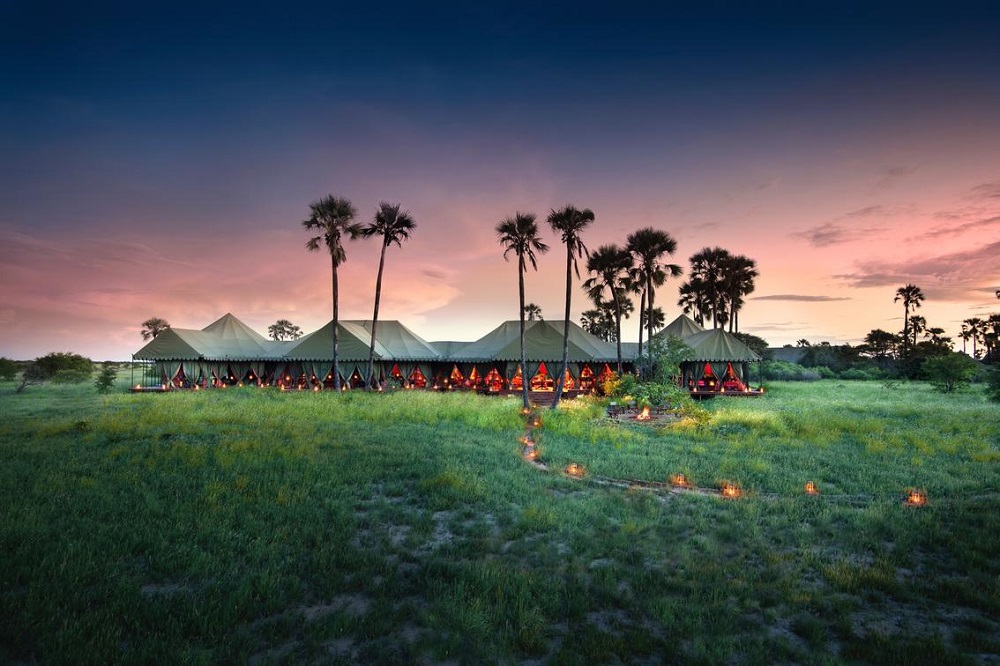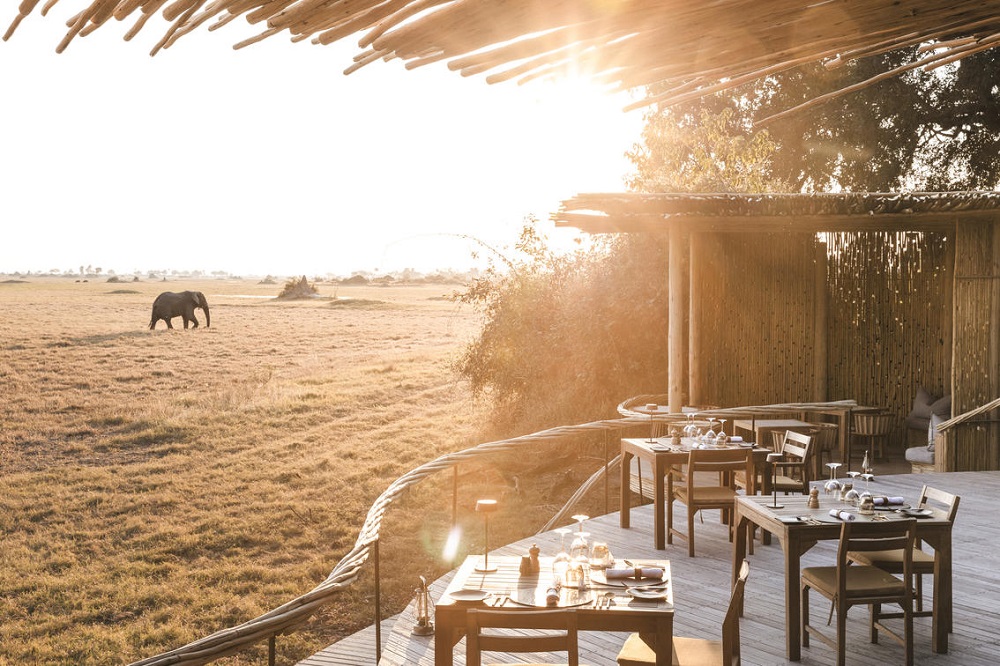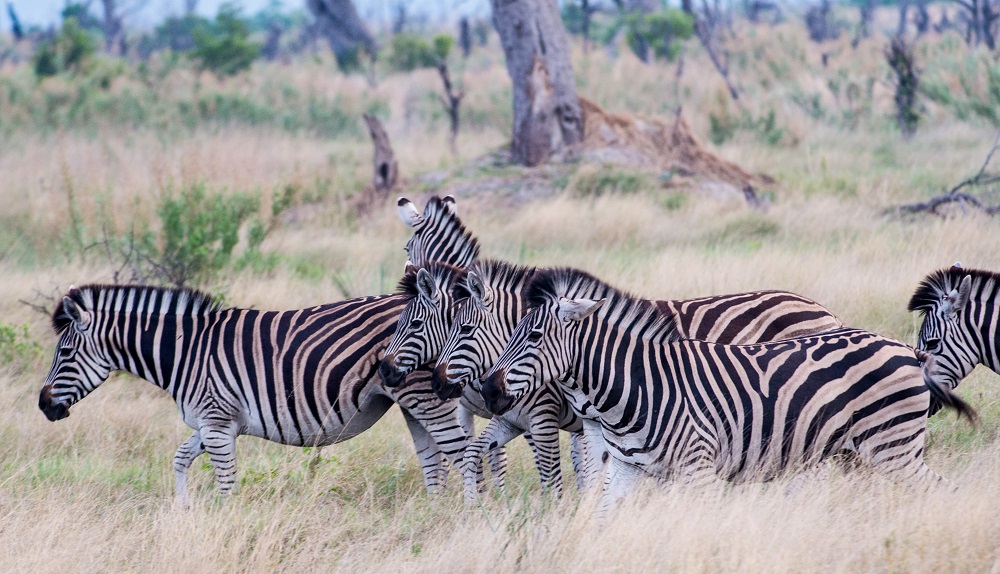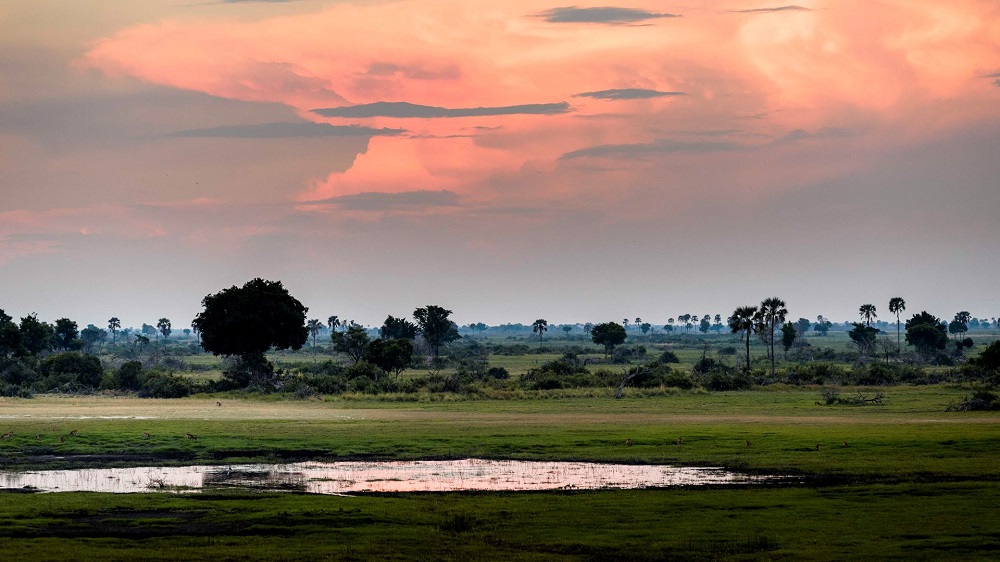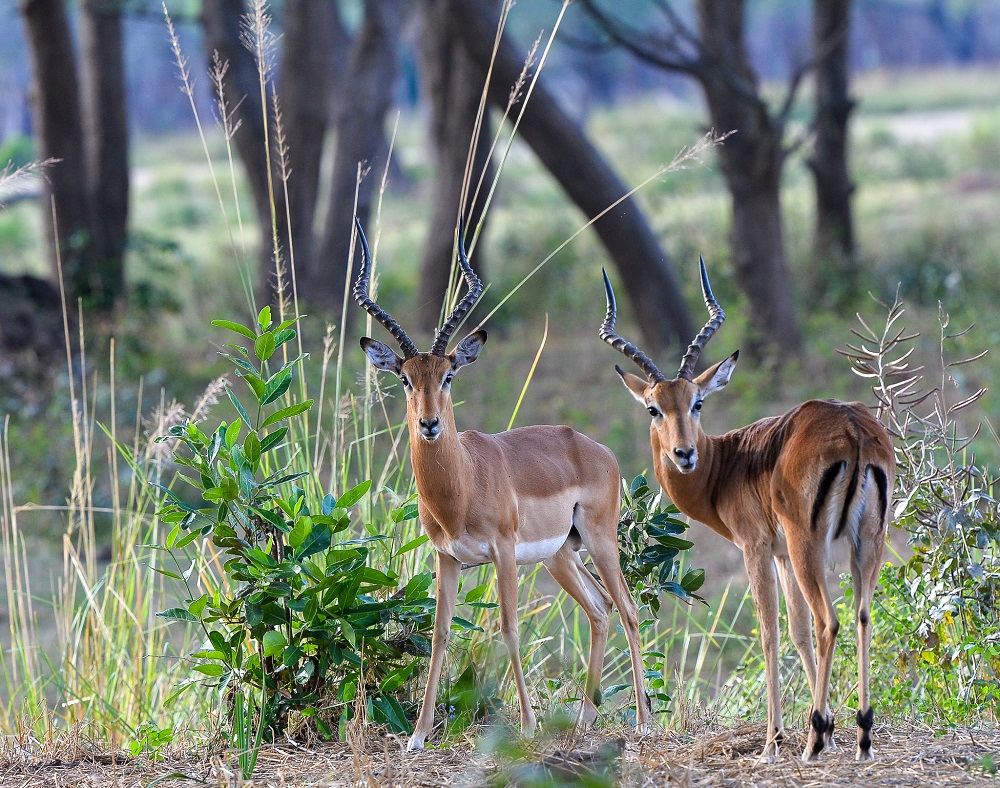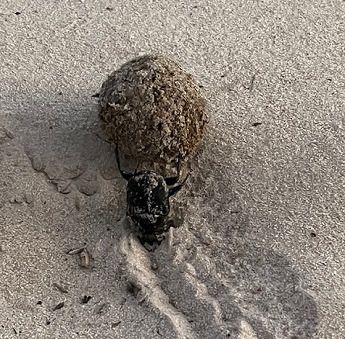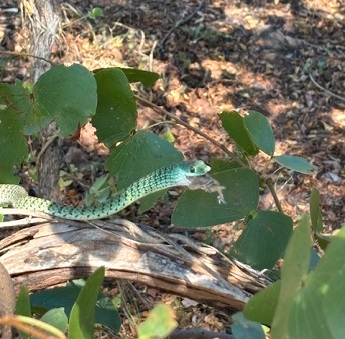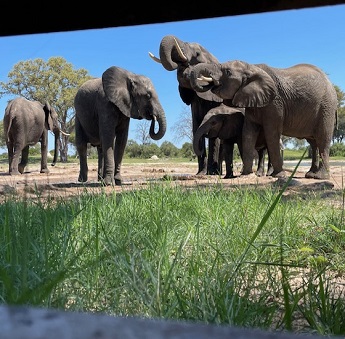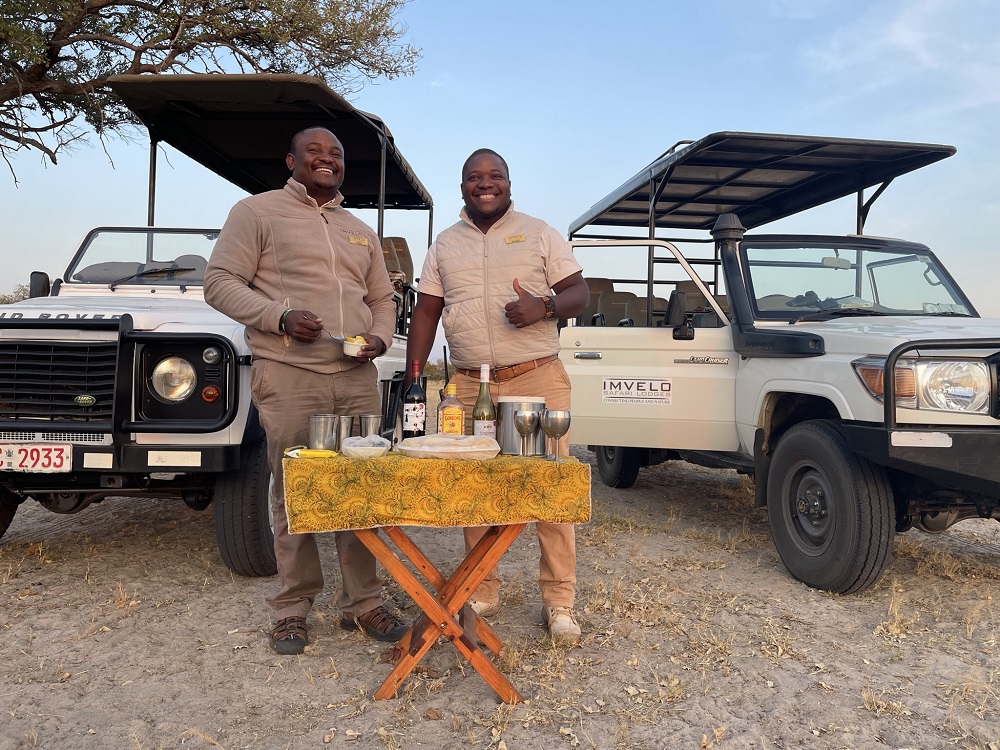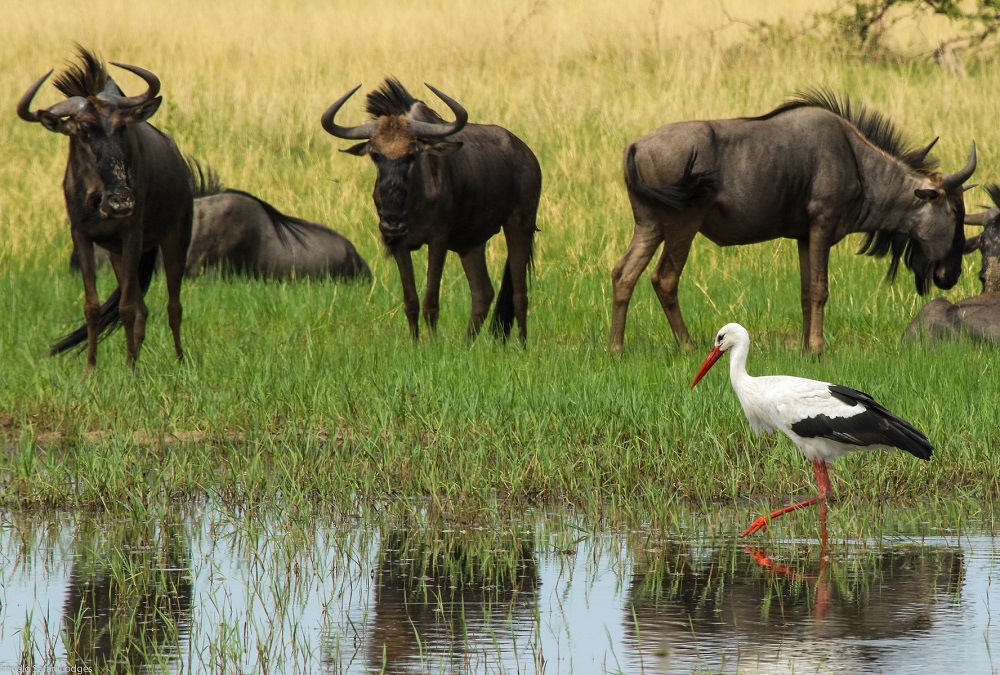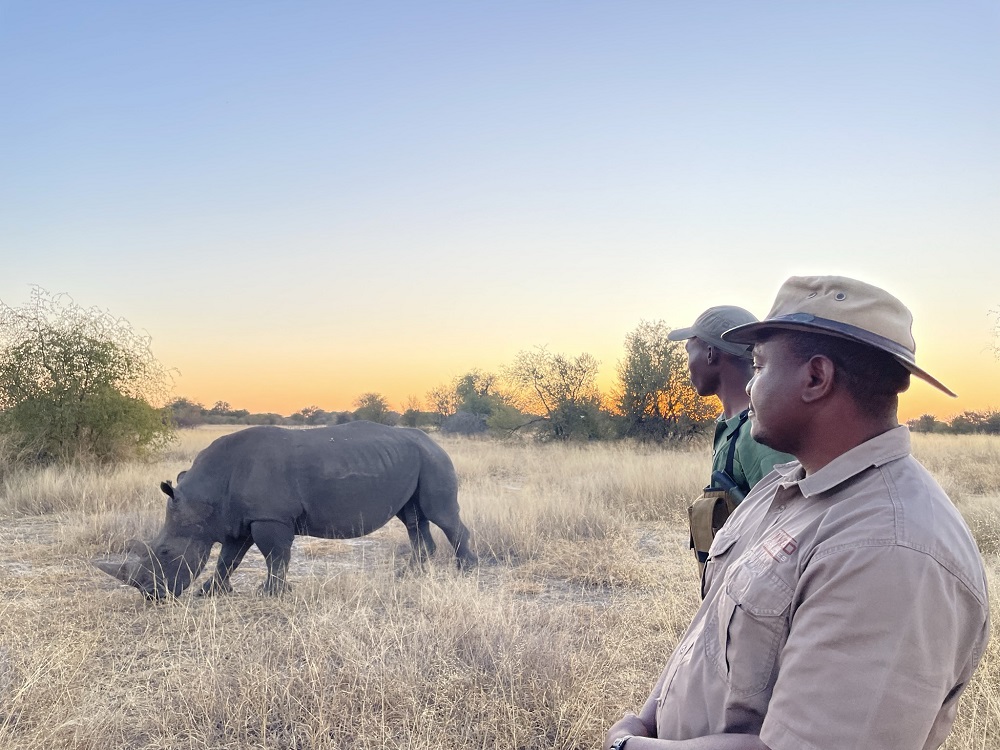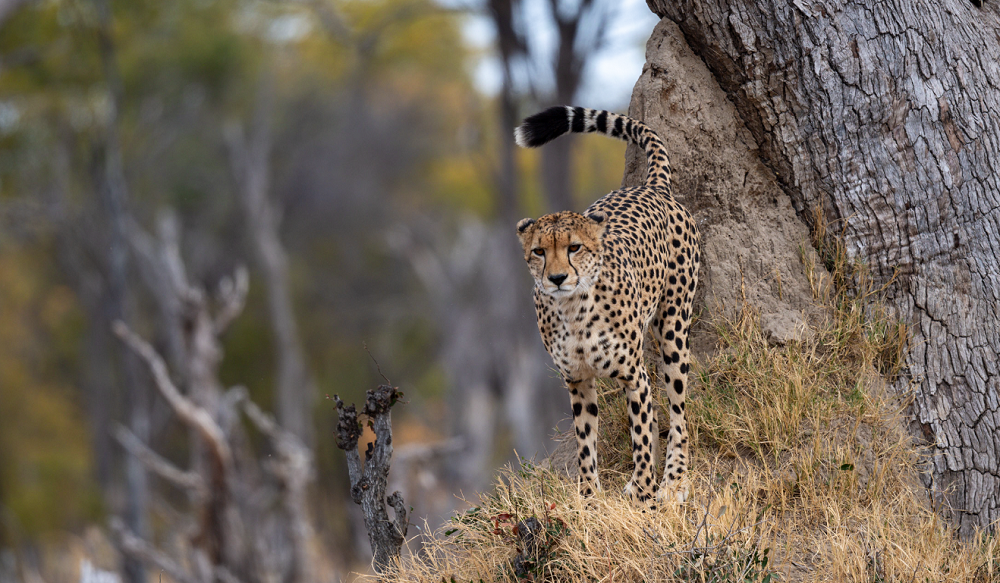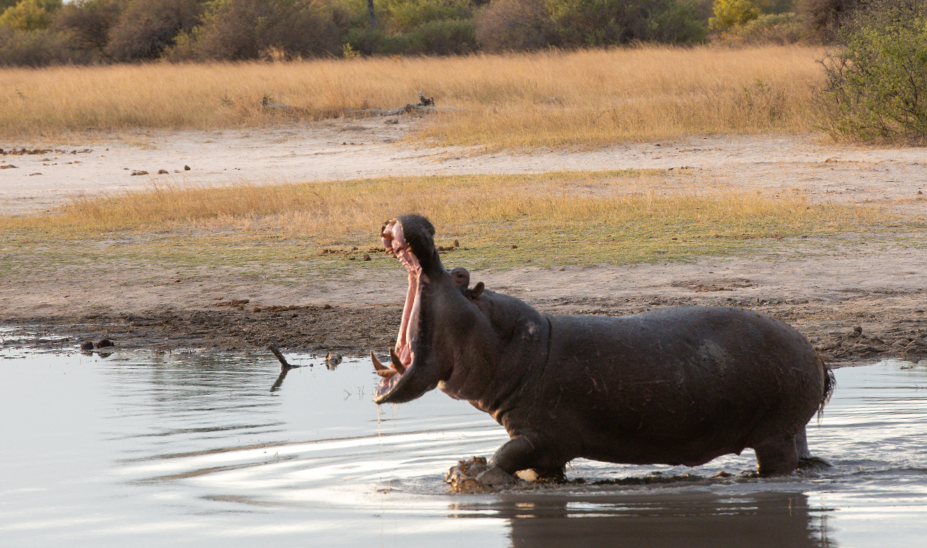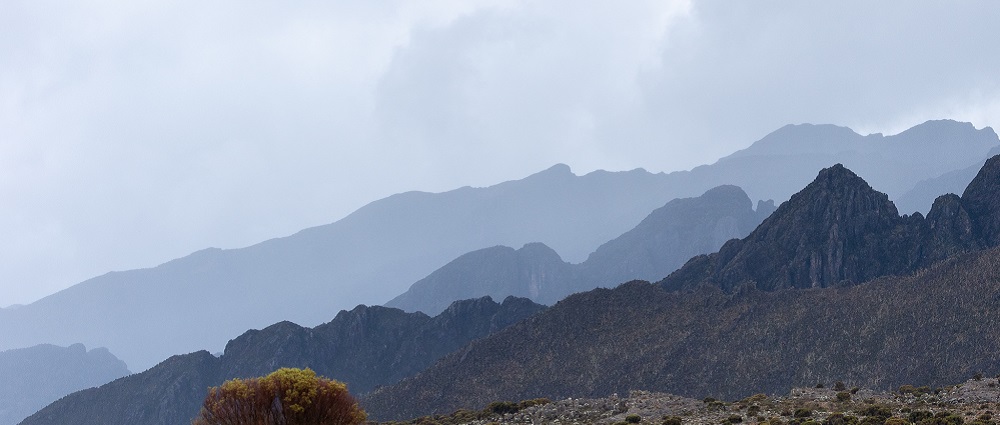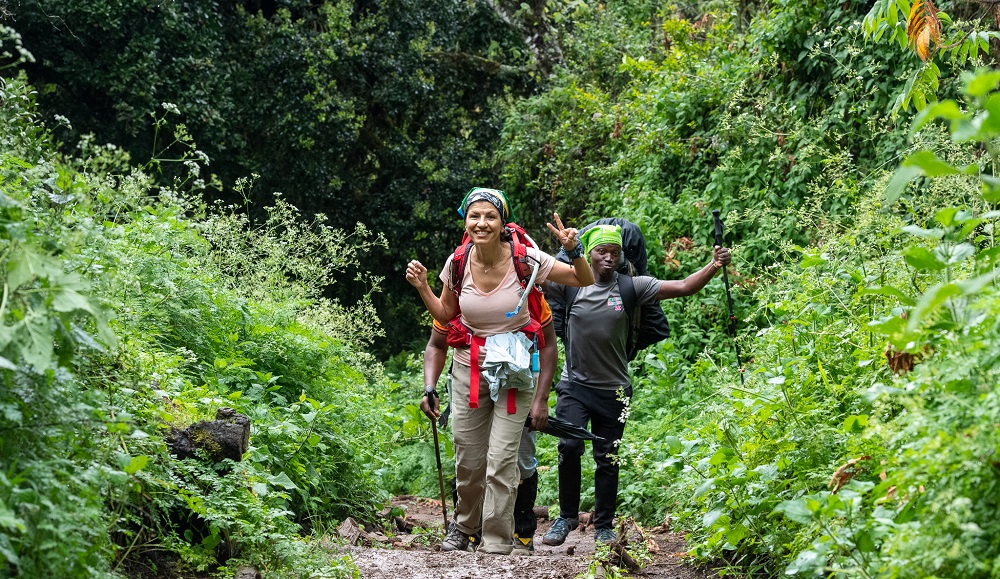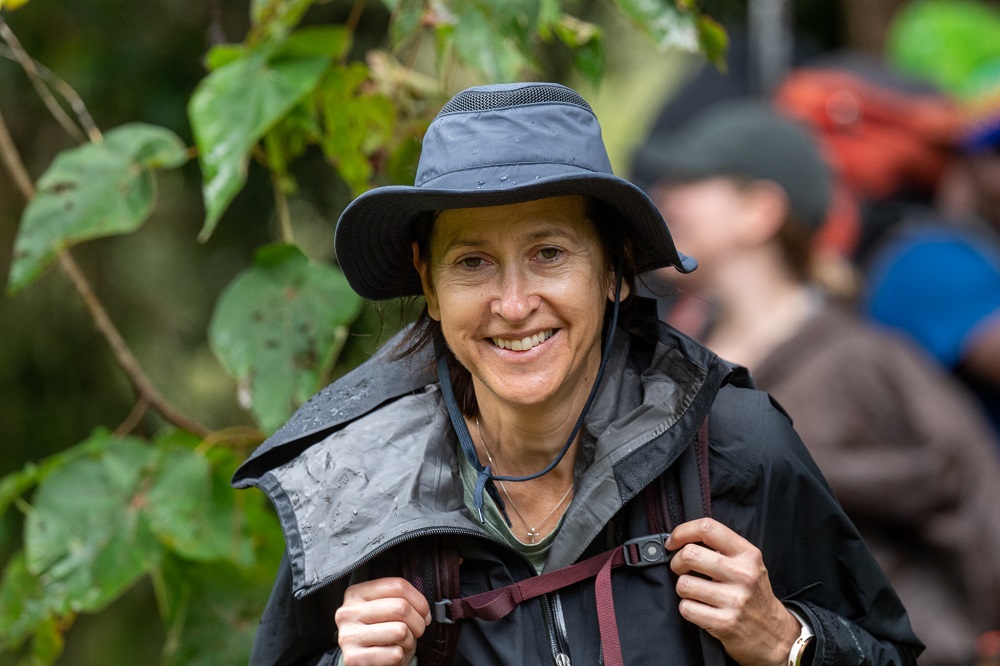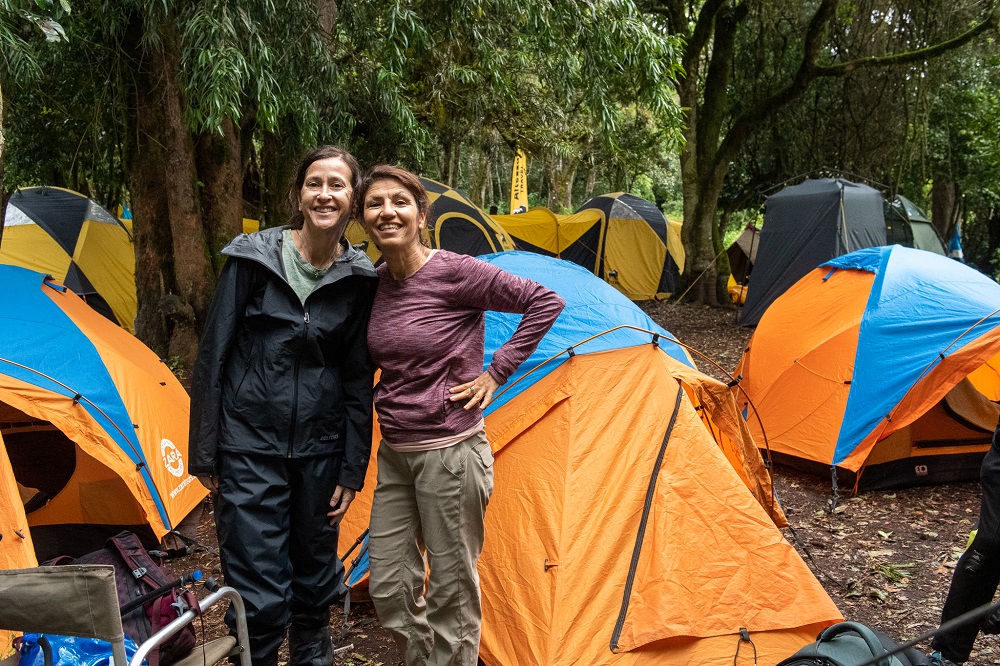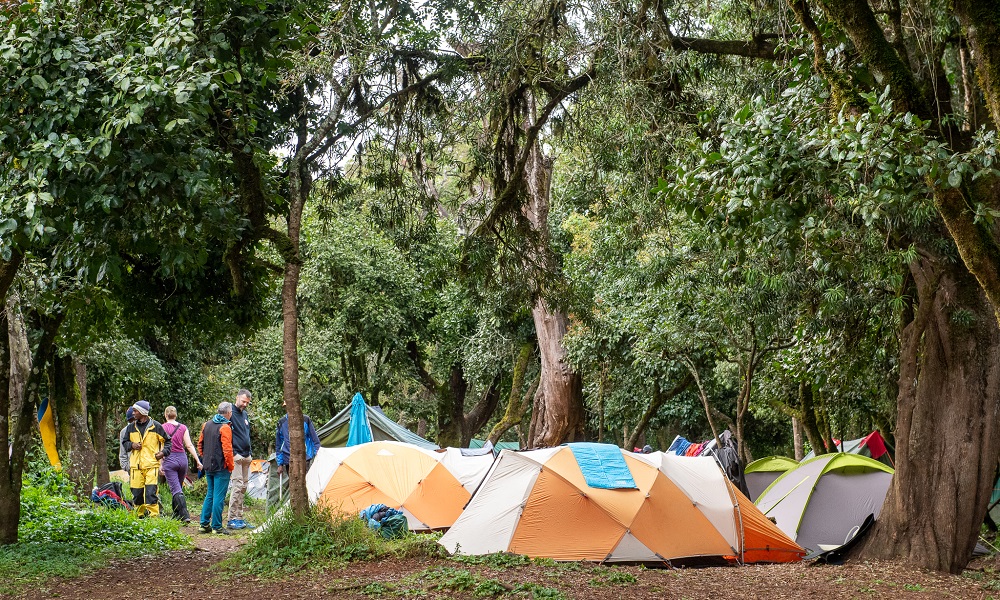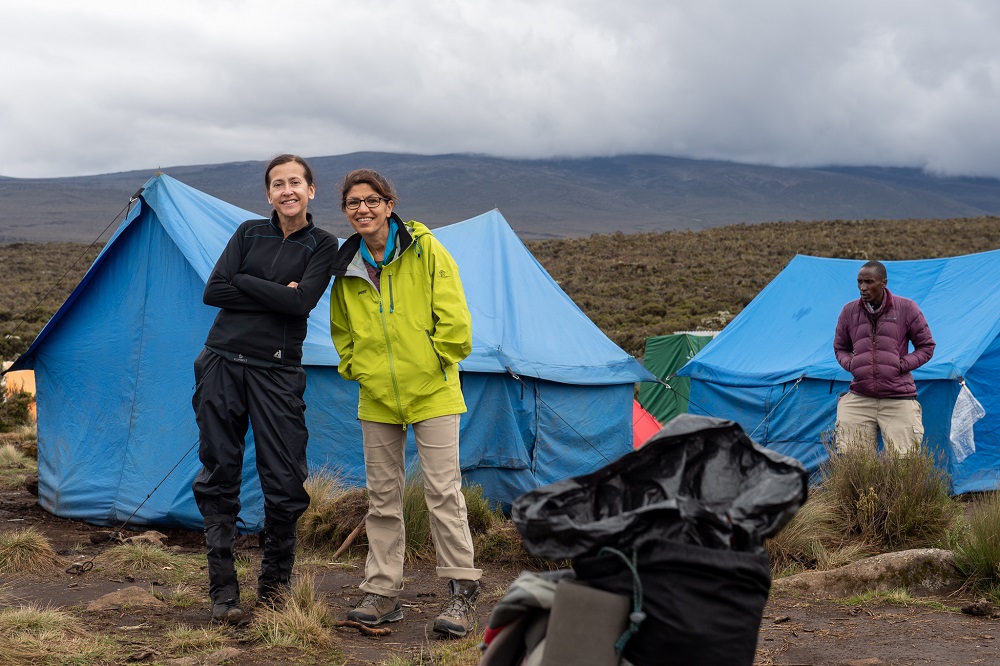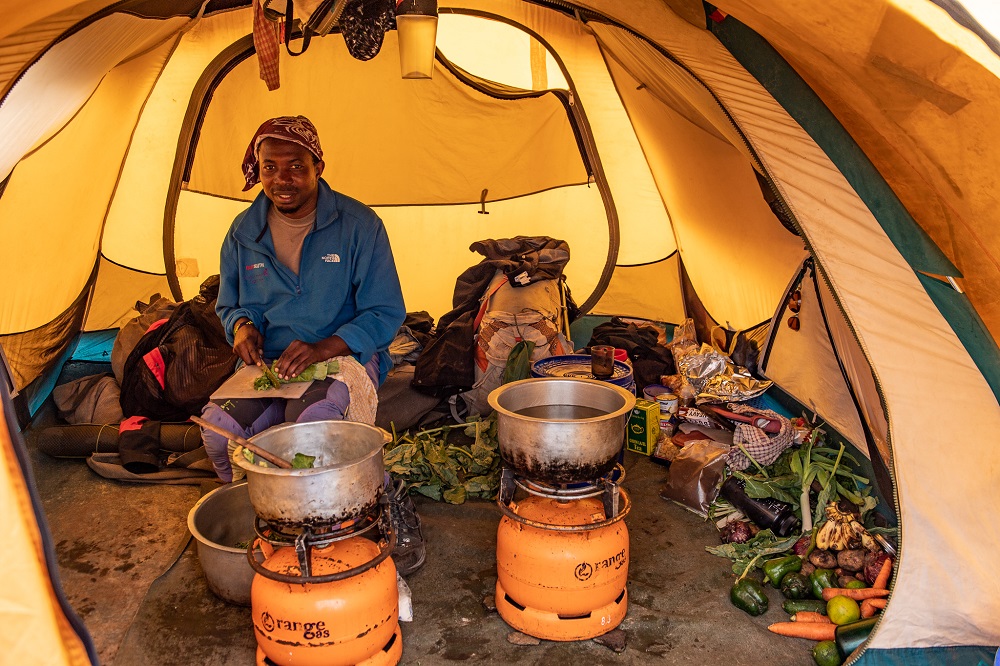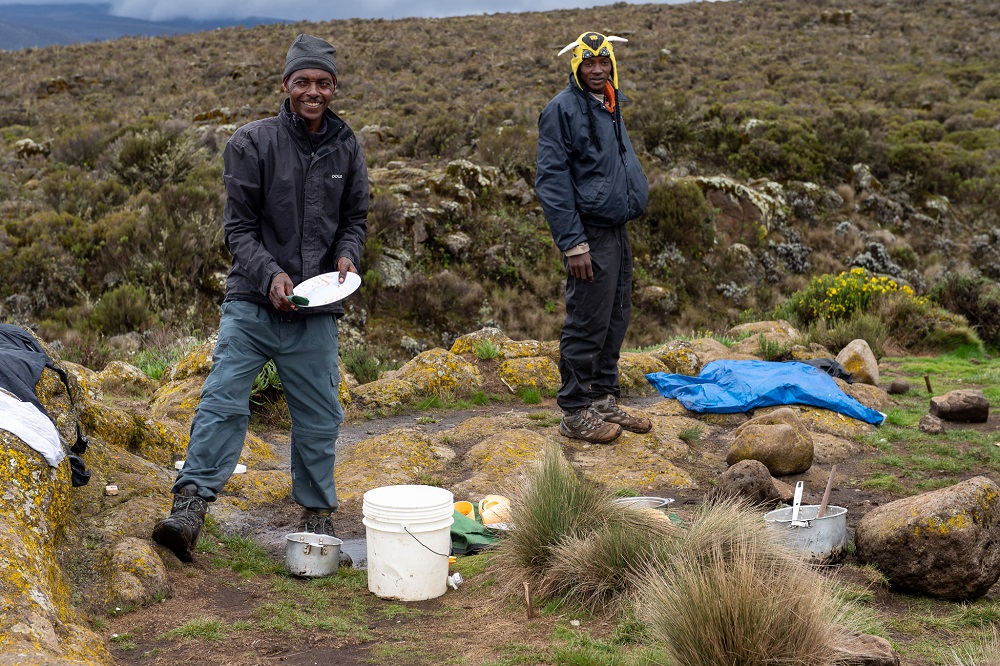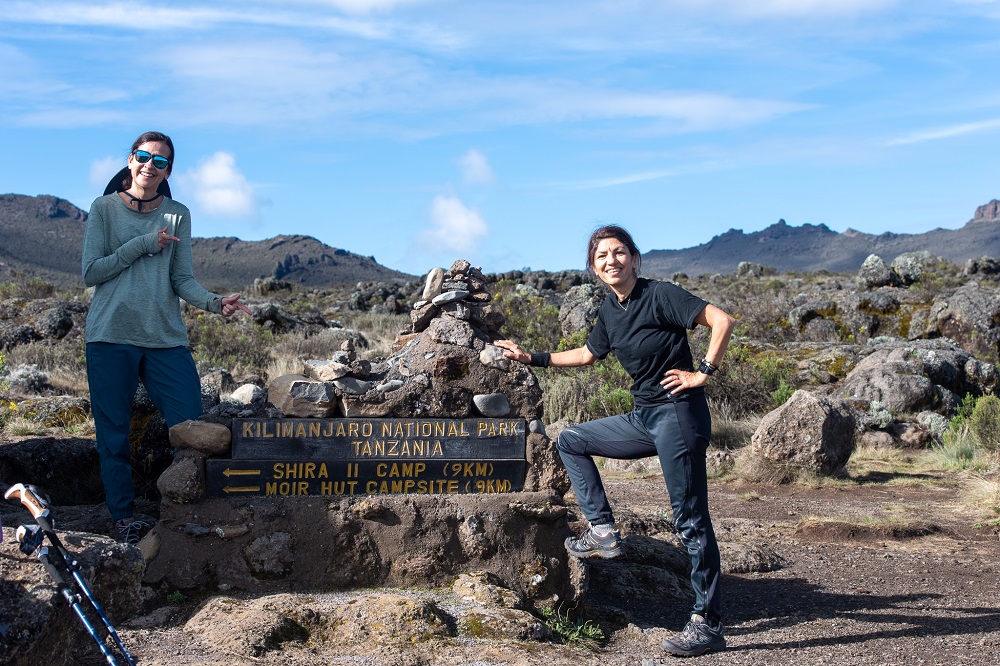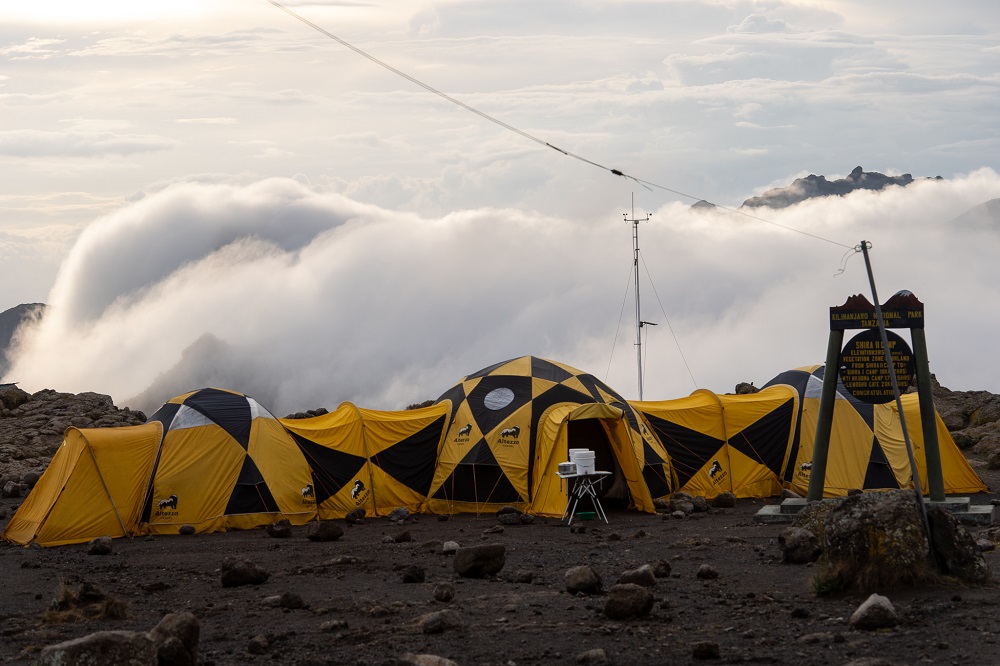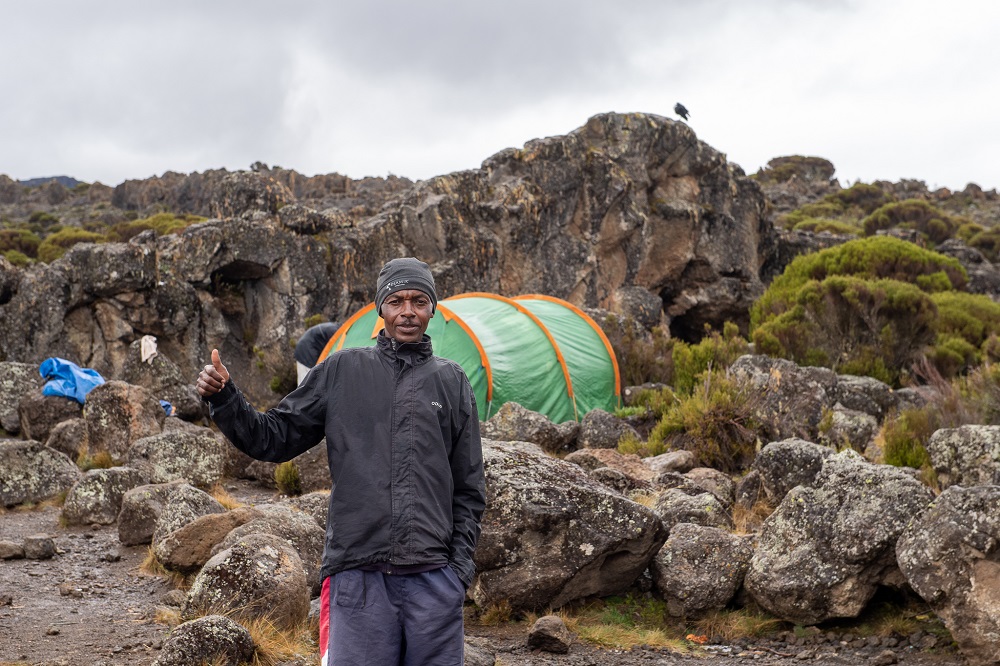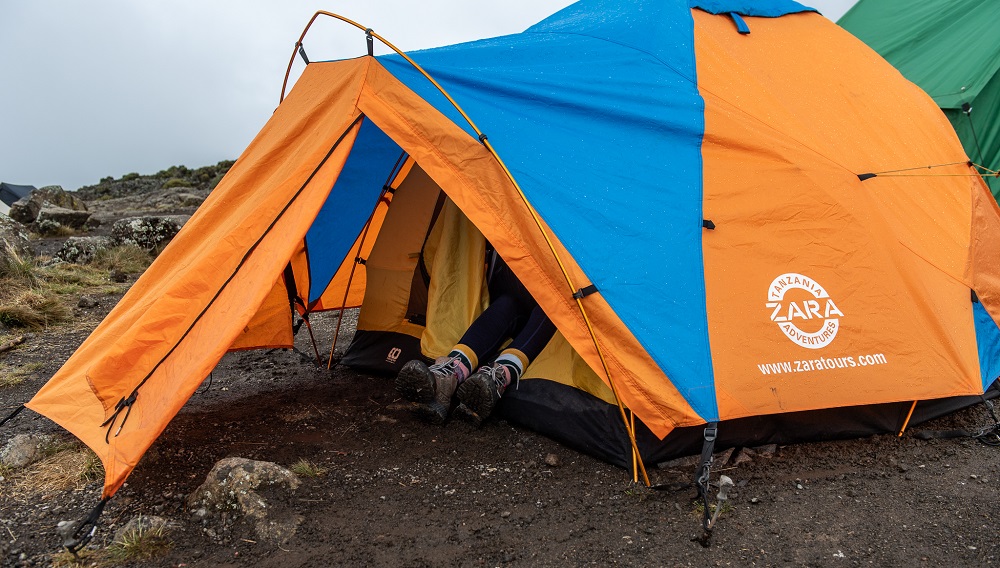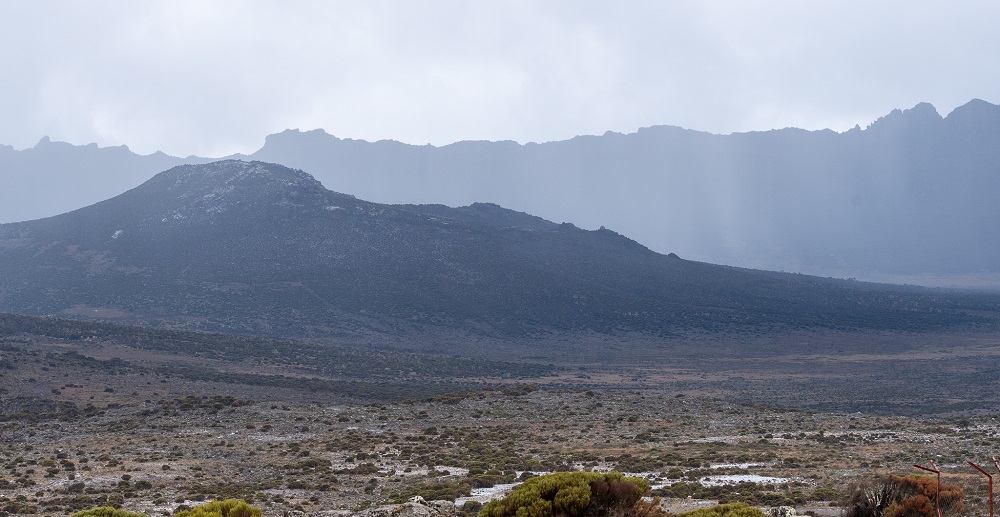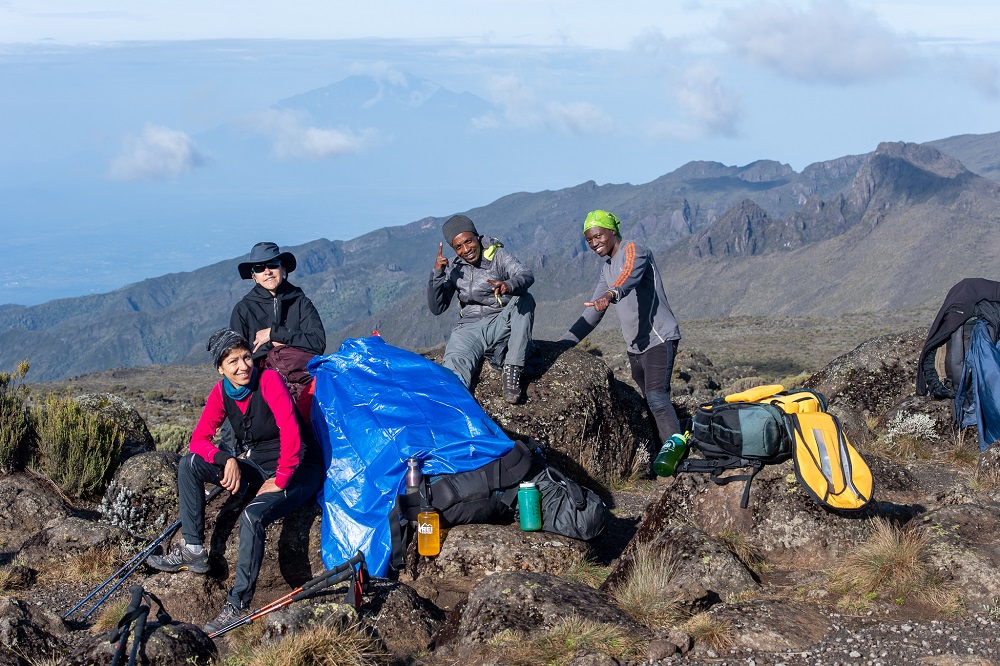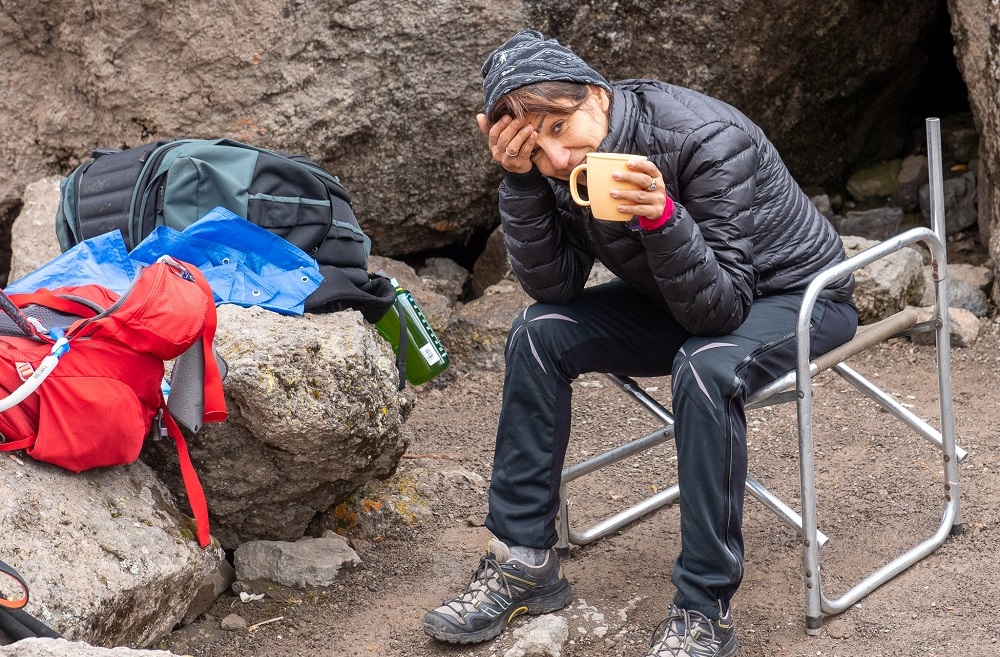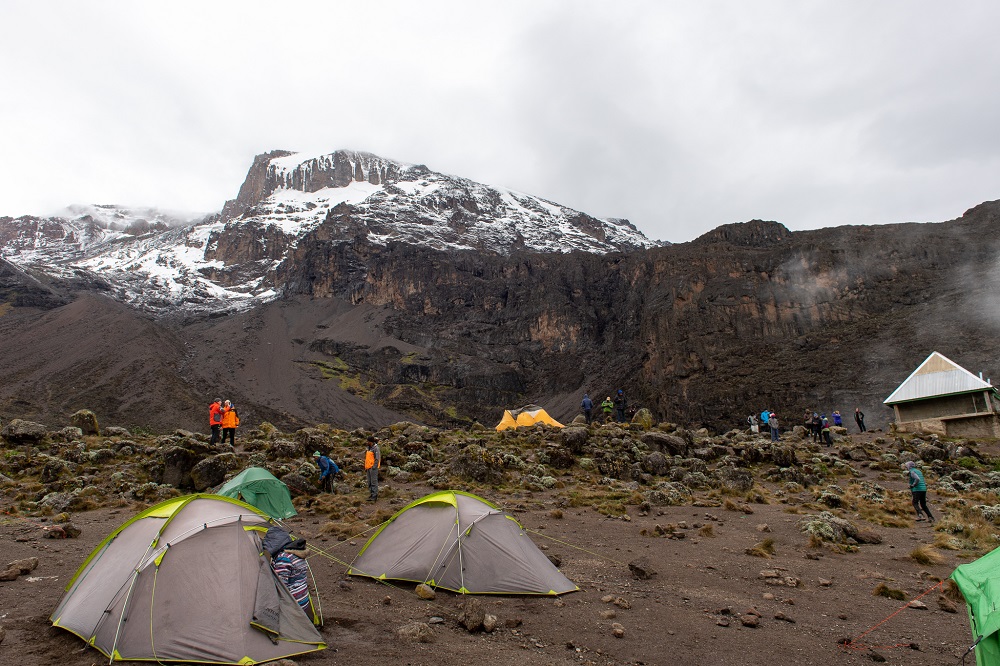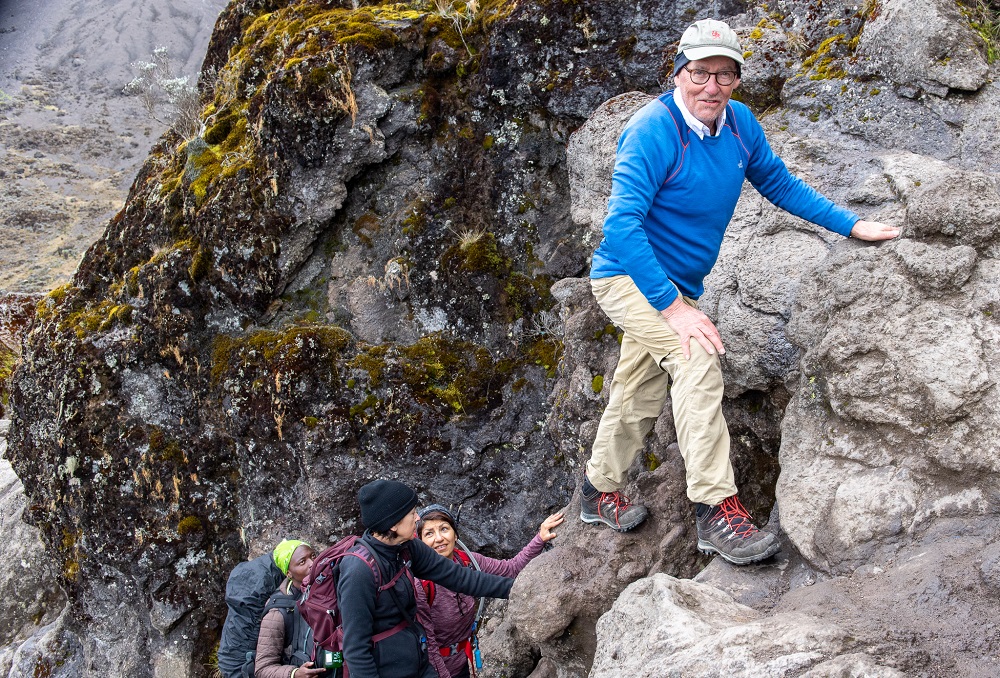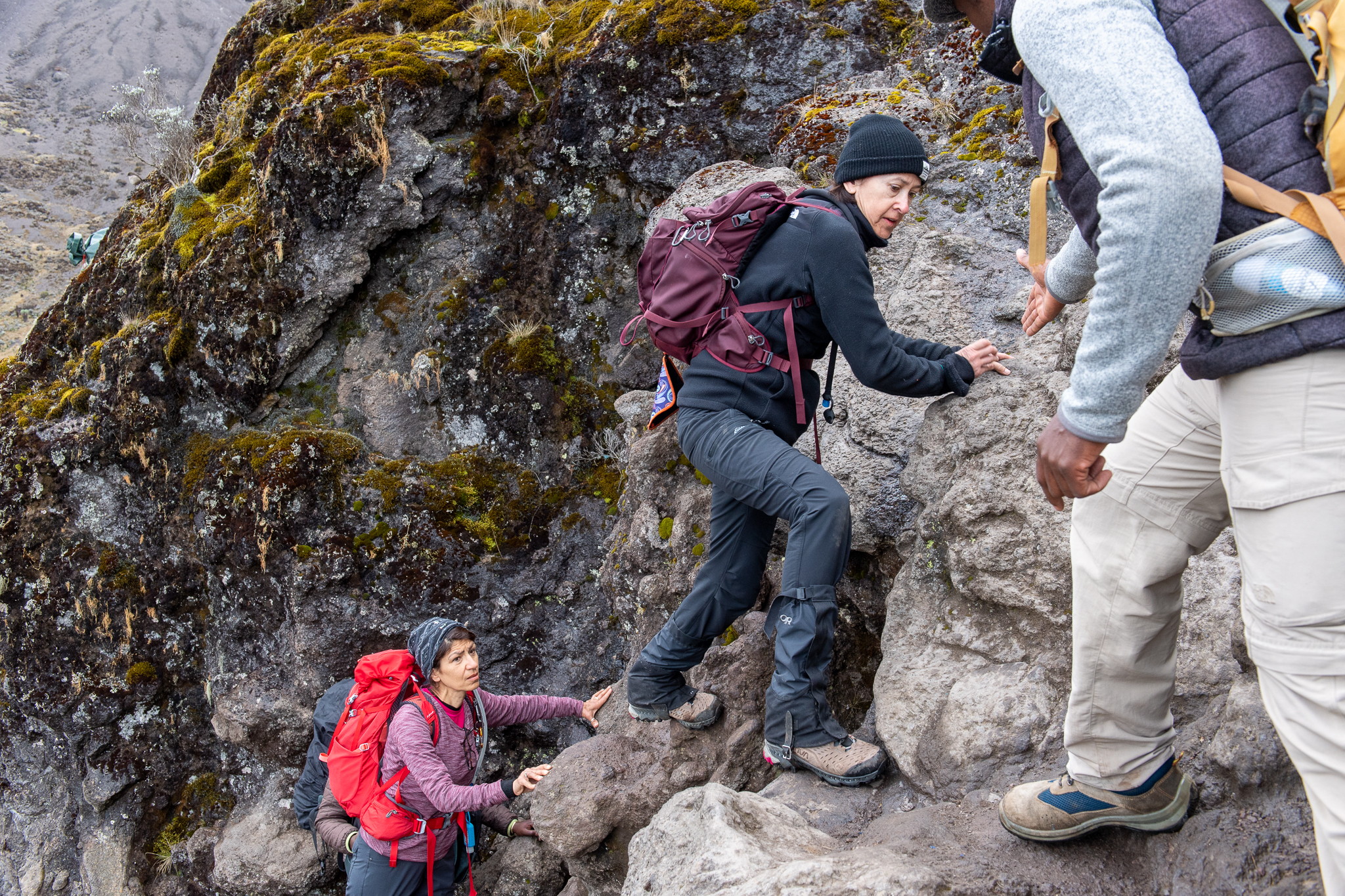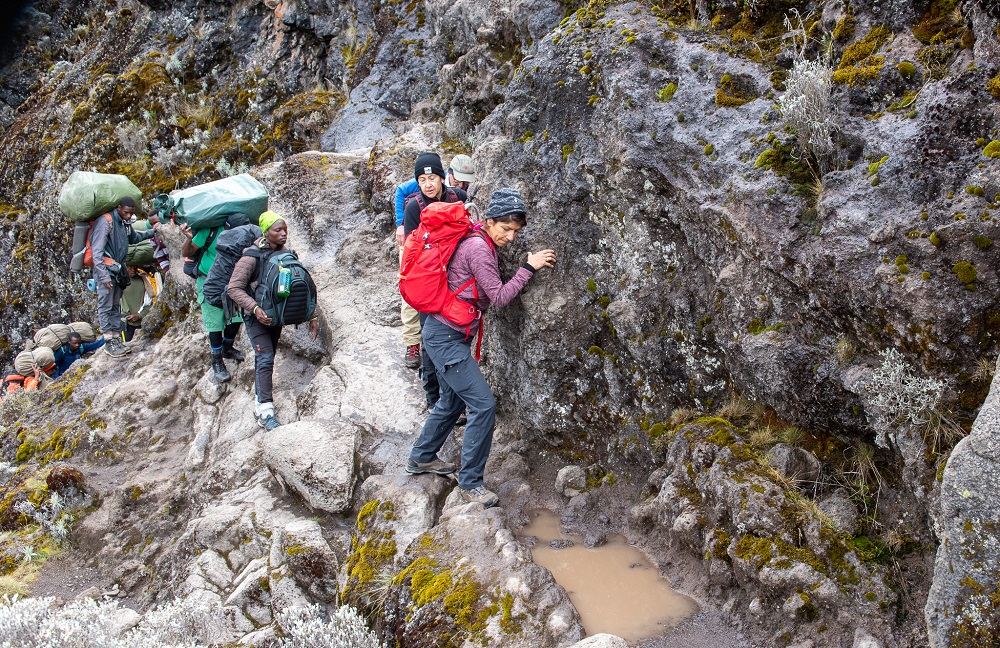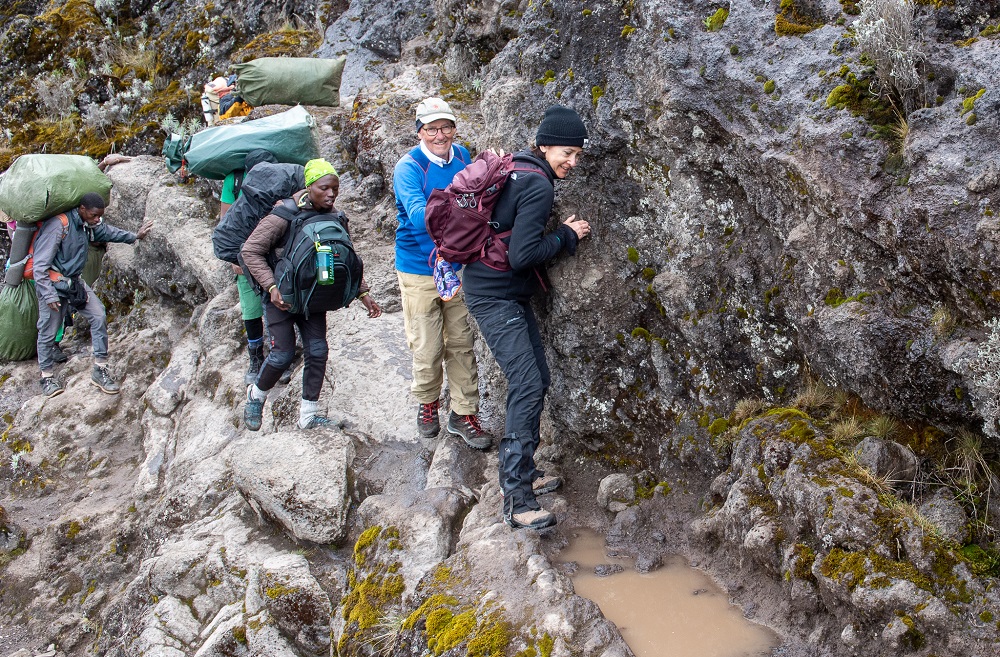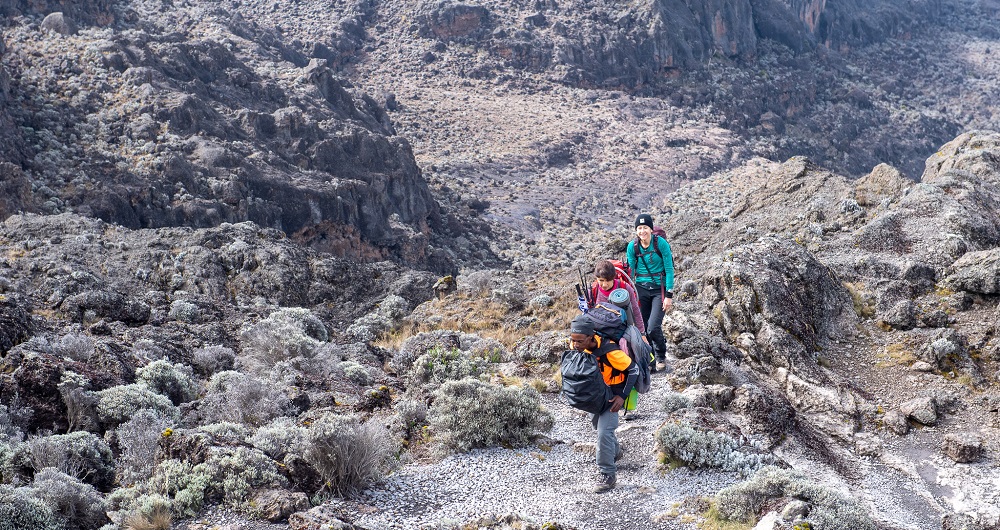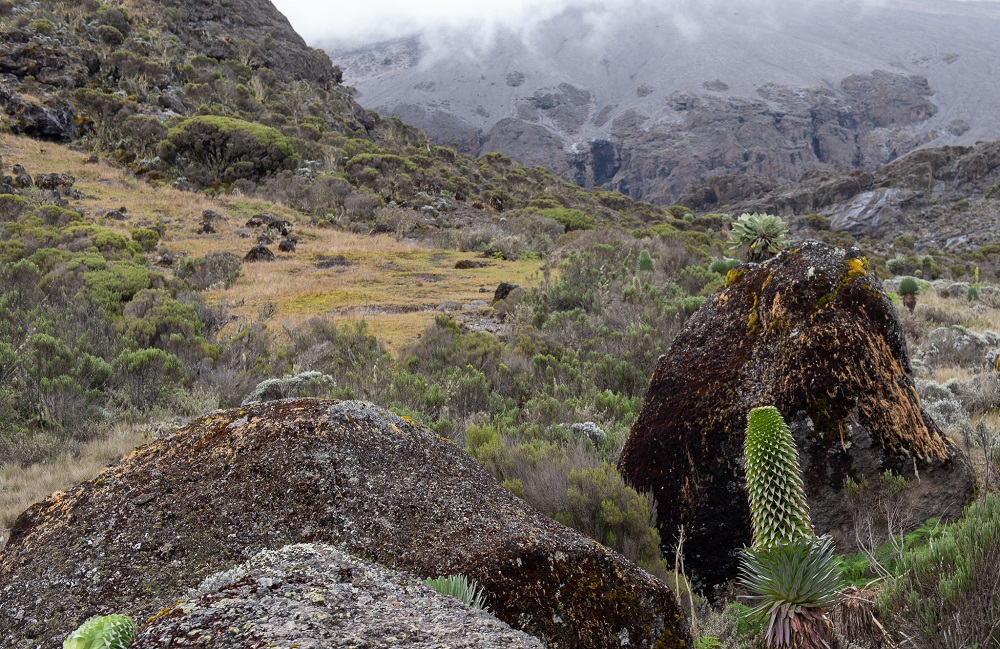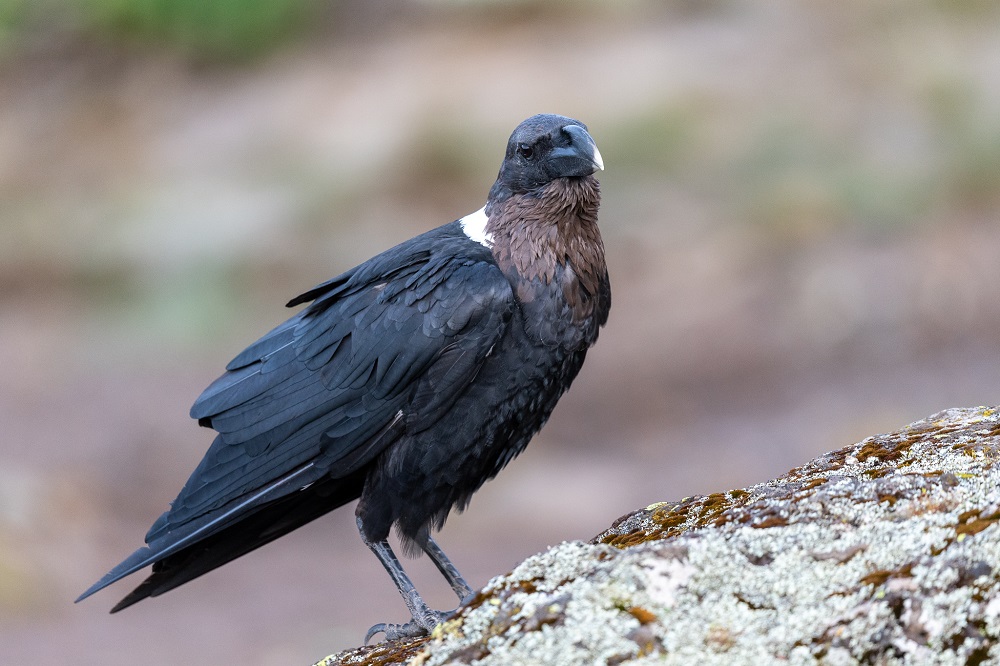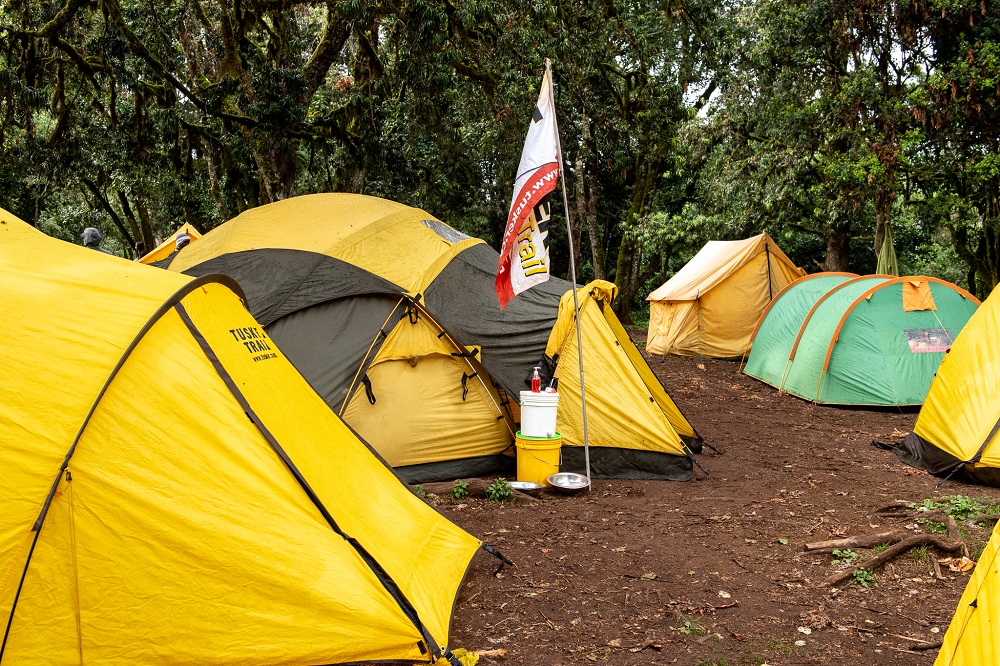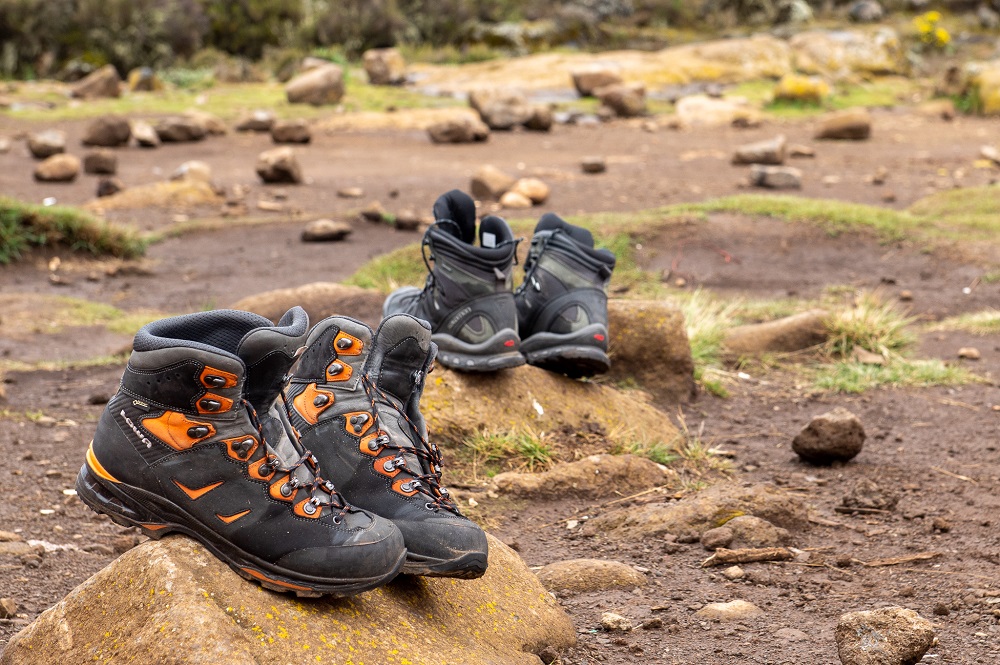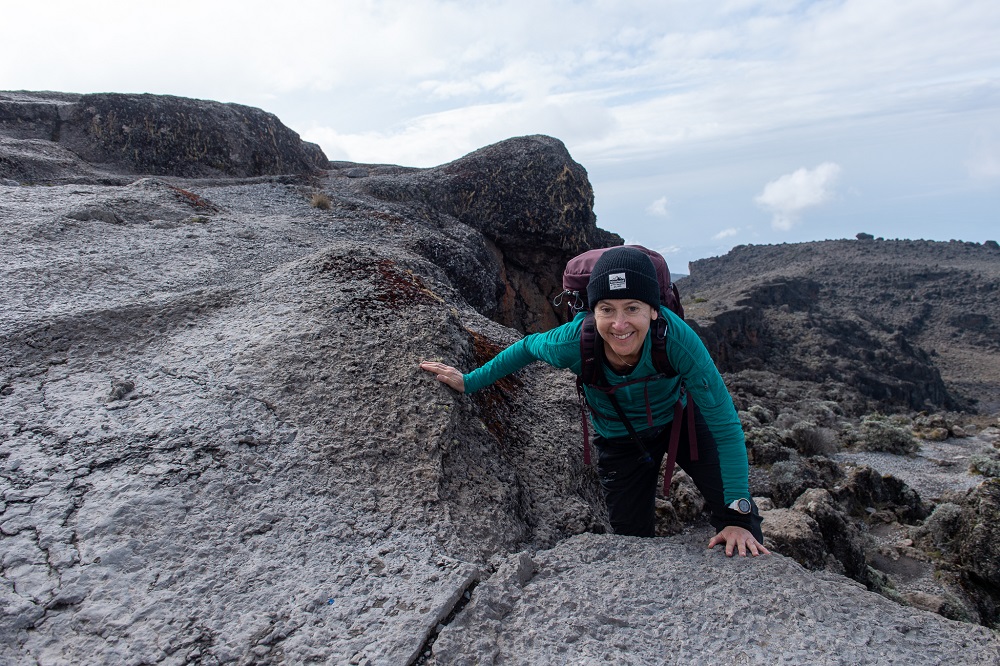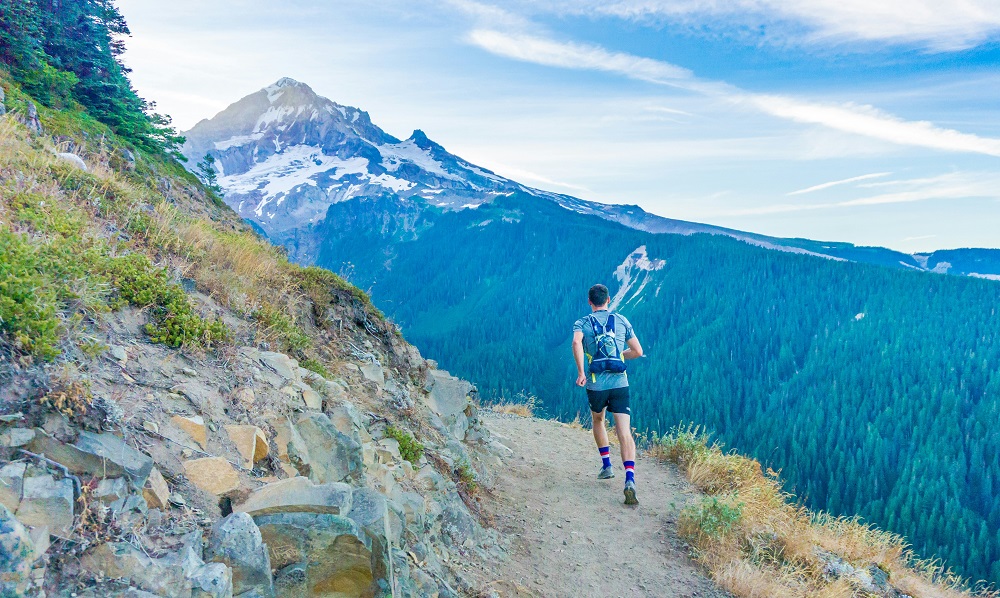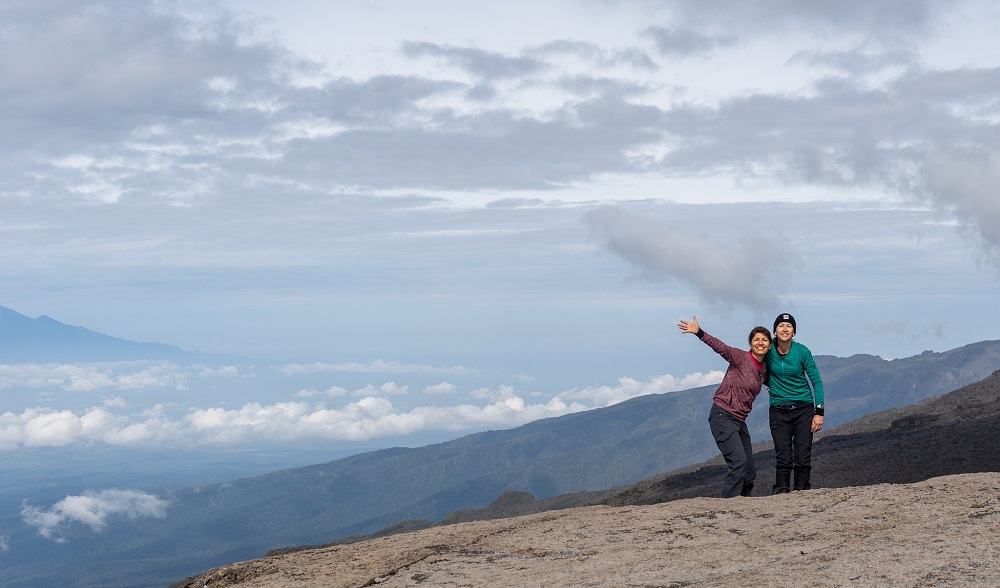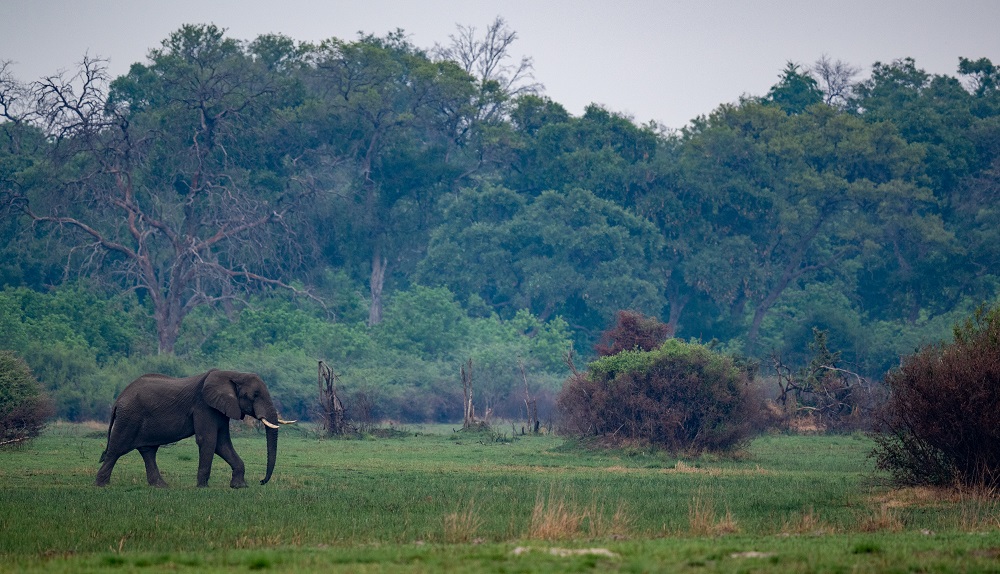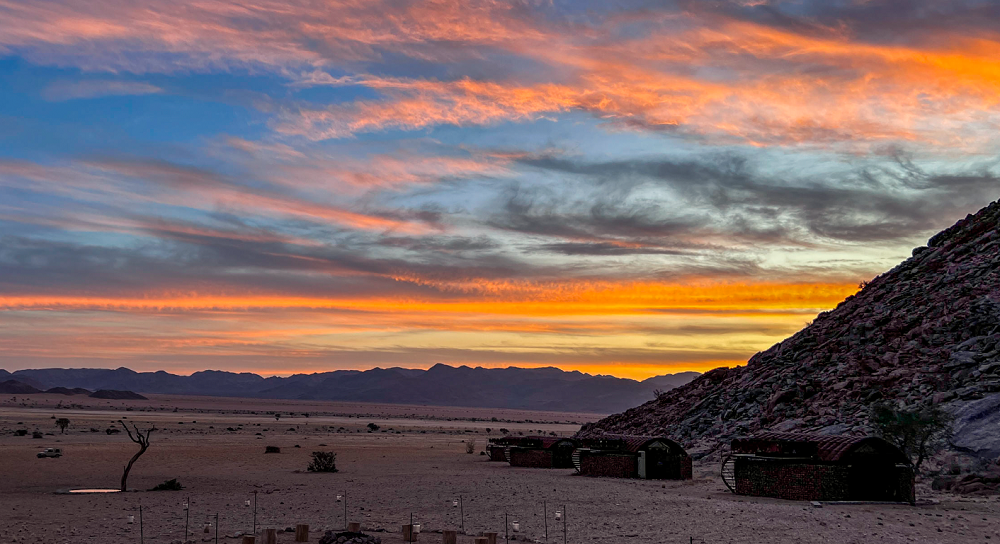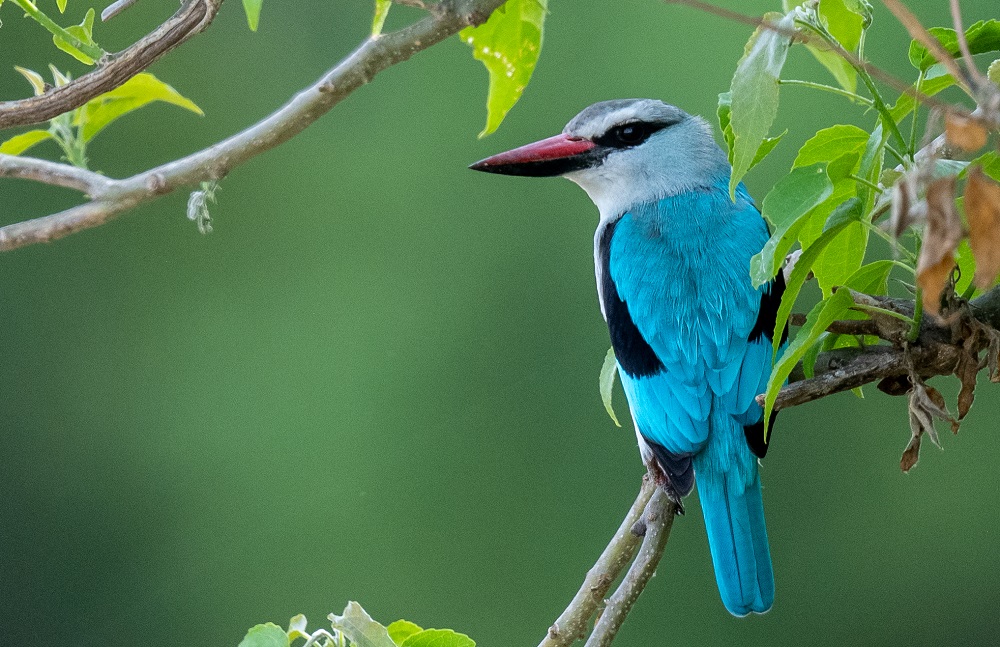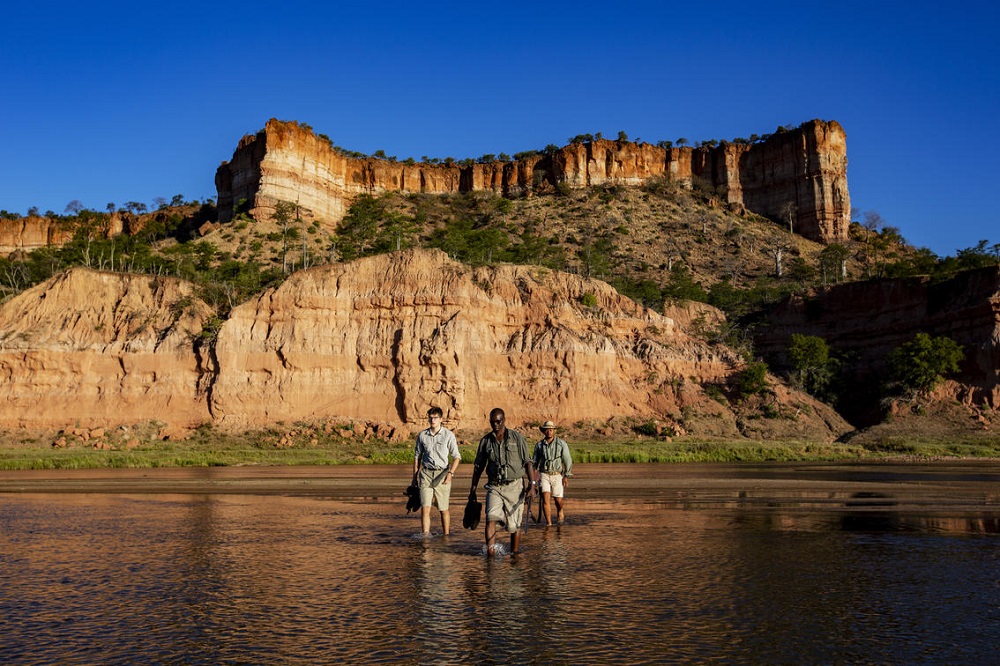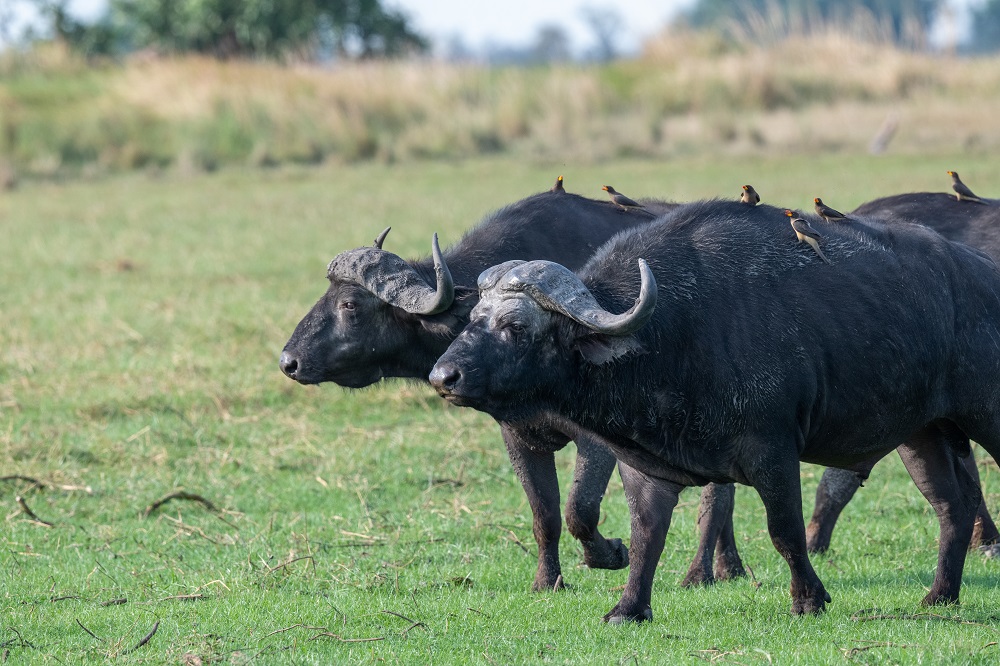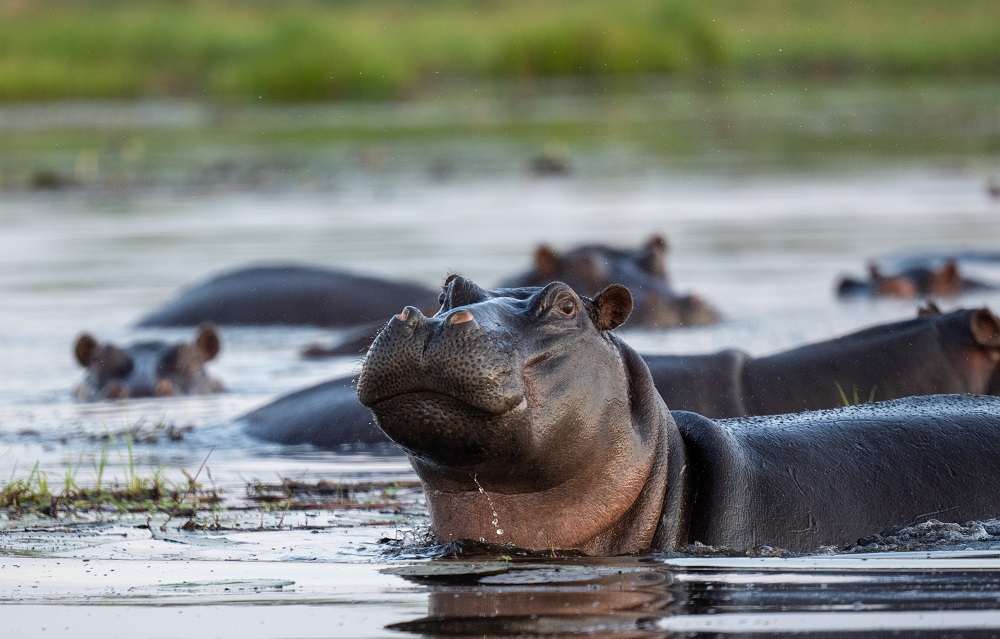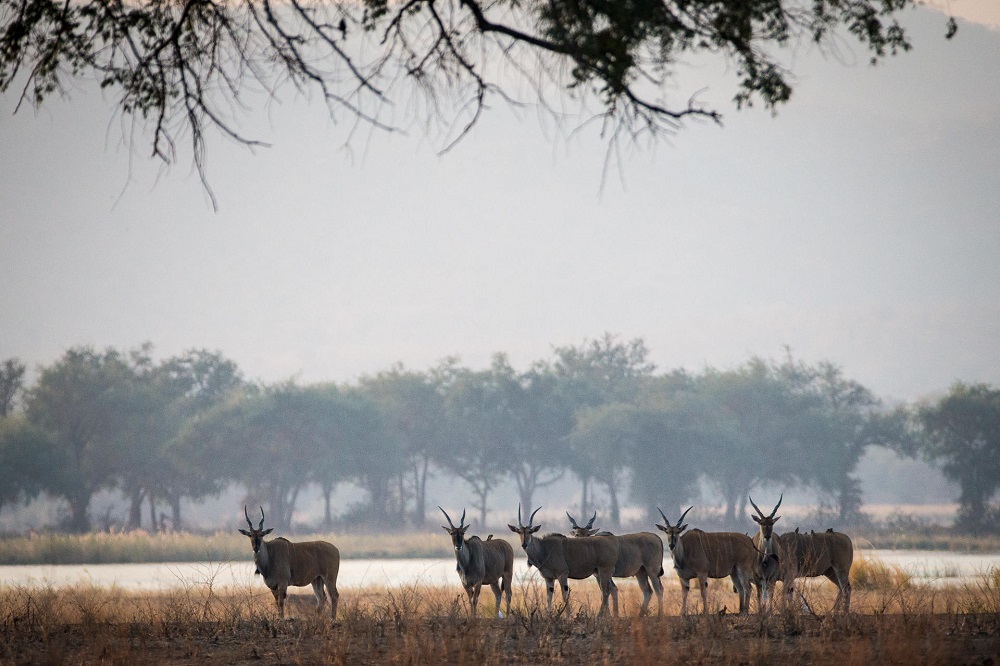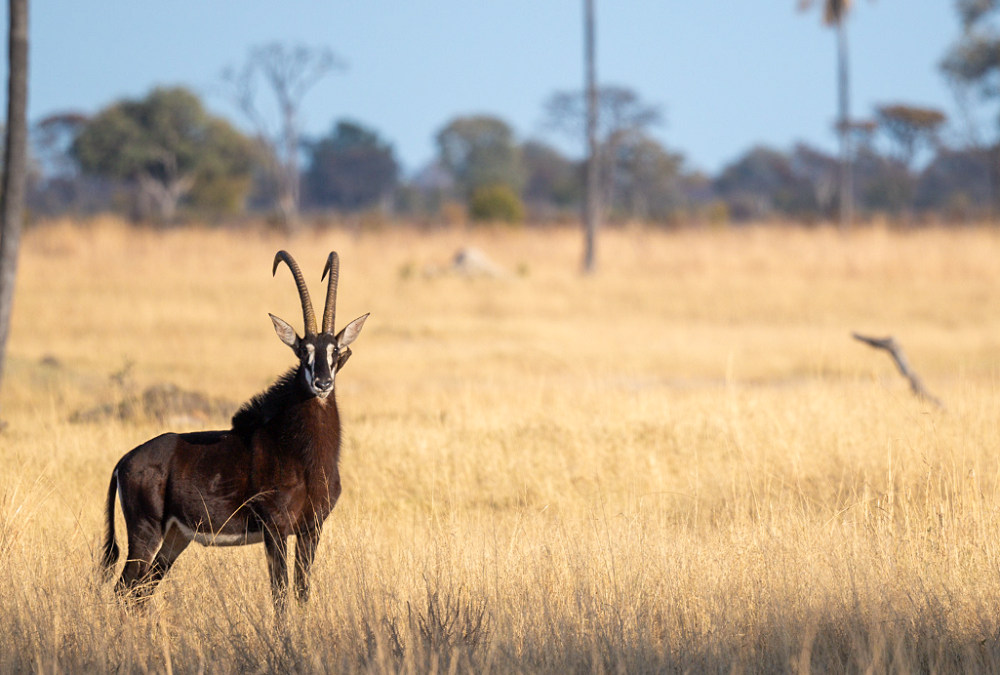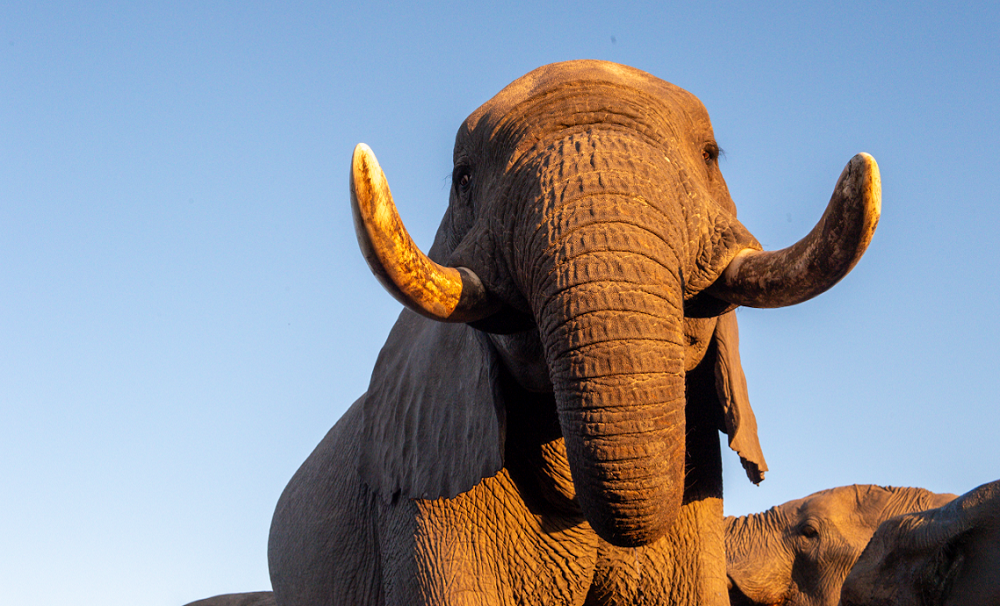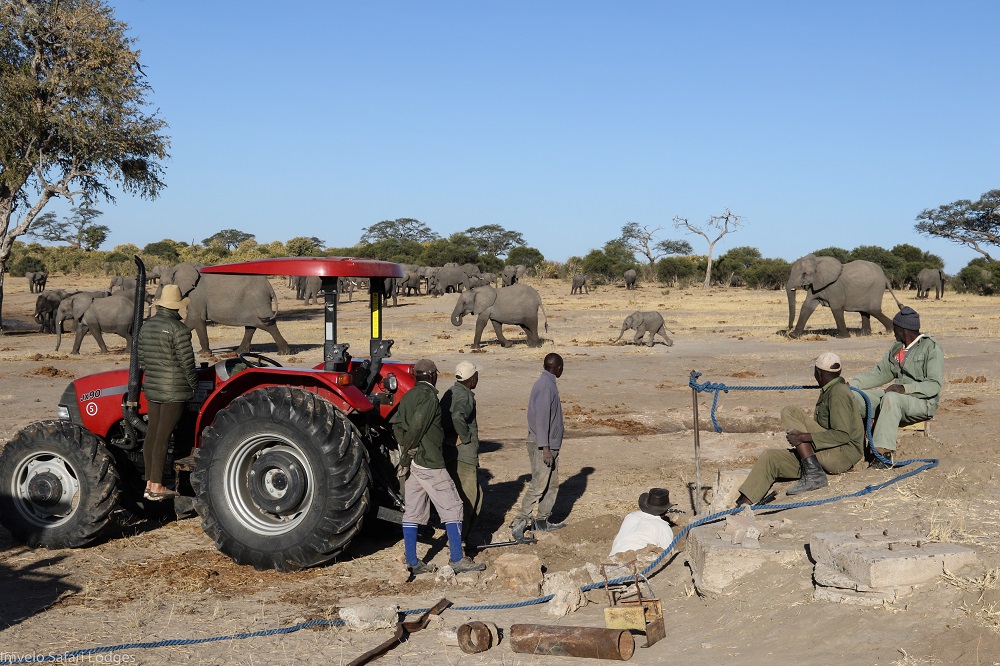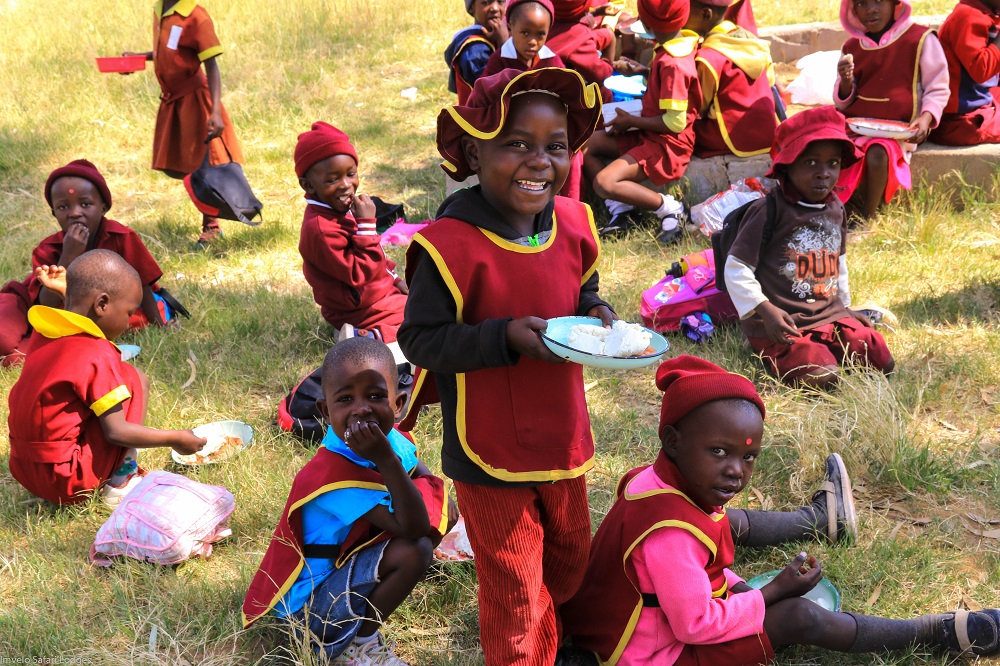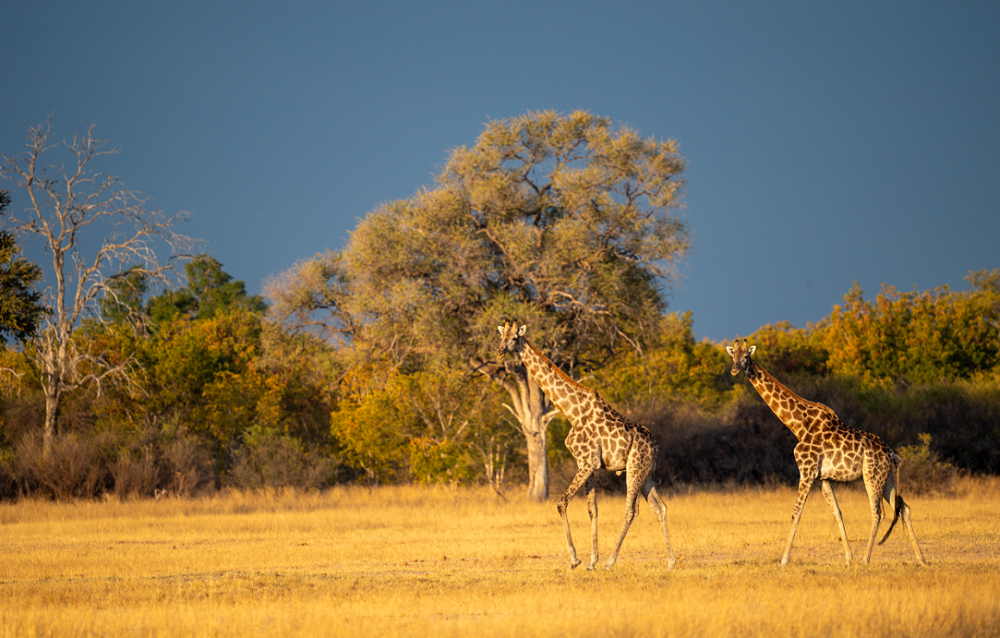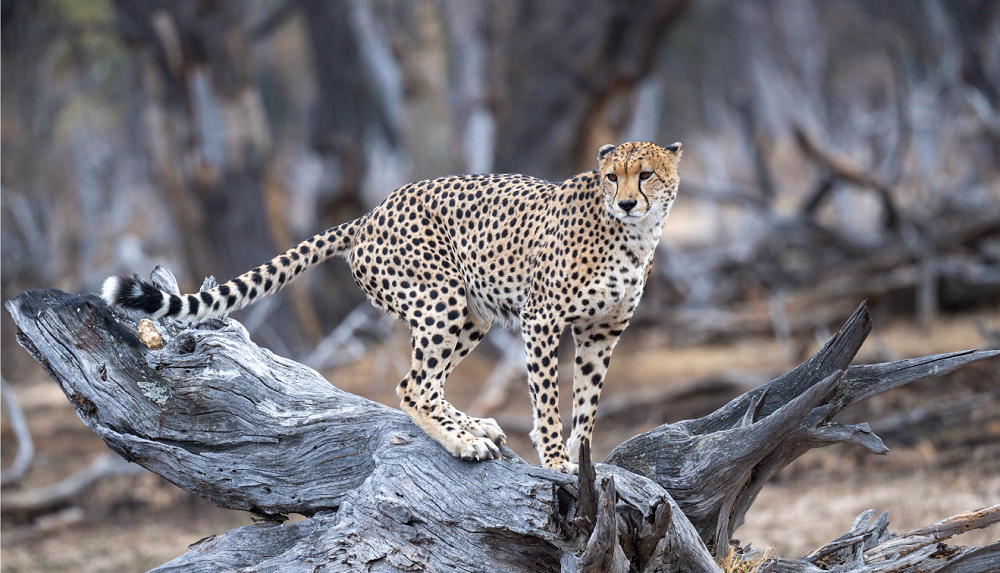Until not too long ago, Xigera Safari Lodge in northern Botswana’s Okavango Delta was like a young artist just breaking into the crowded and hugely competitive pop music arena. Brilliant at times and with loads of talent but just not quite there yet. An opening act at best, and sometimes the ticket you settled for when all the other concerts were sold out.
No more. Architect Anton De Kock and the Tollman family have turned this one-time Cinderella into a superstar, contending for the highest accolades one could possibly bestow in the panoply of elite safari lodge.
Xigera Safari Camp is currently and will likely remain – for the foreseeable future – the most impressive iteration of a safari lodge in Africa. At least that we know of. Twelve ultra-deluxe suites radiate out from a sumptuous central dining and lounge area, all elevated on a three meter high boardwalk.
The rooms are nothing short of gargantuan in size; ours (#2) had a huge lounge area with large plate glass windows and doors with pretty views over the floodplain. The large bedroom with a king size bed sported equally good views. The entire bedroom can be closed off by a simple but effective, electrically operated sliding mosquito net. To the rear of the room, there’s a large walk-in closet with a make-up desk and magnifying mirror. The room has tons of storage space and clothes hanging space. And yes, there is a hair dryer.
The cuisine at Xigera
During a recent visit to Xigera we found the food to be of the highest standard throughout, starting with lunch on our day of arrival. It was fun and exciting with items like peri-peri wings, lamb sliders and a classic caesar salad with anchovies. Dinner was a multi-course affair, served outside in the boma under the African night sky. Does food taste better outside? Maybe not, but combining cutting-edge cuisine with fire and coals, smoke and heat, is never a bad idea. All the more so in the hands of the Xigera culinary team who does magical things with a fine lamb loin chop or a perfectly done portion of boerewors, firm to the bite but never tough, juicy and with a characteristic but understated note of coriander. Delicious served with plain mealiepap, known as sadza, ugali and nshima elsewhere in Africa.
It ended up being an enchanted evening for guests and staff alike. Several of the guests were introduced to African dishes for the first time, much to their delight. A spirited dancing and singing performance by staff members concluded the night.
The team was back at it quite early the next morning over breakfast. The Xigera eggs Benedict, with salmon, was particularly good and delicate, with a perfect Hollandaise sauce.
Dinner that night was an outstanding 6-course tasting menu, a novel and sophisticated take on the traditional boma dinner. It retained the fire, coals and smoke of the boma, as well as the social nature, with guests, chef, and sommelier around a quadrangular outside area, with 3 small hibachi cookers providing the coals.
Taking us through the first five courses, assistant chef Ollie Notes provided background and context to each dish.
These included:
- A smoked mozzarella with tomato relish and basil pesto
- Grilled butternut with herb salt and local honey over a bed of butternut mousse
- Salmon tostada with avocado wrapped in a freshly made corn tortilla
- Twice-baked potato with onion and chevre and fresh goat cheese.
- Grilled onion with a Gorgonzola reduction
Chef Branea from Cape Town put the finishing touches to the delectable ice cream dessert.
Game viewing at Xigera
We’ve been on quite a few game drives in the Xigera area over the years and we have seen a definite uptrend. On our previous visit there we had our best view yet of a sitatunga on a mokoro outing, we bumped into some lions and we got some great leopard photos as well.
This time, more of the same. Right off the bat, Xigera surprised with a sighting of two good-sized male lions, in their prime, on a small island not far from the lodge. Not too far away – three female lions – all part of the same pride.
Early mornings are when you want to be on safari in Botswana. That’s when some of the cats are still active as we found out on the following morning’s drive. There was a lot going on with a coalition of two young male lions – just coming into their prime – having just recently moved into the Xigera area at the time.
On this day, they were making no secret of their presence, loudly proclaiming being around with roaring – all while scent-marking everywhere. Of the two, the dominant male lion seemed to be keen to seek out the three females we had seen the previous day. That action would no doubt have serious consequences as the pair of dominant males would have been forced to react. That didn’t happen that day.
We left the two interlopers and located the dominant brothers who had also been roaring earlier that morning. They were clearly aware of the threat to their authority but were by no means cowed or nervous. They seemed very much at ease and in fact dozed off after they had found a shady spot to their liking.
What was clear at the time was that the lion pride dynamics at Xigera were poised for a sea change and guests at Xigera may be in for some surprising developments and titanic battles should the two younger males decide to take on the older, bigger, dominant males for control of the pride.
While we concentrated on the lion dynamics during the course of our stay, it became clear that the hit and miss game viewing which had characterized Xigera back in the day had matured. There was plenty of general plains game around in the way of zebras, lechwe, giraffes and kudus. Plus some solitary elephant bulls and a few small breeding herds.
Combining Xigera with other Botswana camps
How does one ideally combine Xigera with other Botswana properties? We posed the question to Red Carnations’ Sally Gray who had an elegant and creative suggestion. Combine Xigera with Natural Selections’ Jacks Camp and Wilderness’ Mombo.
Here is Sally’s take on the unique appeal of each of these properties and how they complement each other to create a perfect safari combination. One more piece of good advice from her: “Be sure to end your stay at Xigera!”
Jack’s Camp
- As with all lodges of this caliber – location is pivotal. Jack’s location is incredible – overlooking the Makgadikgadi pans.
- Completely different ecosystem and landscape compared with anywhere else in Botswana.
- Home to several unusual species of game, largely endemic to this region, such as brown hyena, black-maned lions, aardvark, oryx and springbok.
- The experience of being able to sleep out in the salt pans – I have done this – possibly the best experience I have ever had.
- Accompany the local San people on one of their bush walks – learning the secrets to their survival in such a harsh environment.
- This area is also the home to one of the largest migrations of zebras in Africa – truly remarkable.
- Similarly run to Xigera – Jack’s is family owned and run by Ralph Bousfield, who is hugely respected in the safari industry.
- Jack’s Camp works well with Xigera as the two properties deliver a completely different experience.
- Jack’s offers a wide variety of activities, so a 3-night stay is recommended.
Mombo
- Iconic location on Chief’s Island in the Moremi Game Reserve.
- It’s not for nothing that Mombo is known as the place of plenty – it is a game-viewing delight.
- Made famous by the leopard named Legadema – beautifully captured in the wildlife documentary Eye of the Leopard. Her grandchildren and great-grandchildren are still at Mombo.
- Dominated by cats, particularly lions and leopards.
- Mombo offers game drives only, so it needs to be combined with another lodge for guests to get the full Botswana experience.
- Mombo has a “hide” experience which allows you to get up and close with the animals.
Xigera Safari Lodge
- Refurbished and revamped and opened in 2021.
- 12 Suite lodge.
- Fully air-conditioned which is a rarity in the Okavango Delta. Most of the other lodges have an airflow over the beds.
- Xigera has as many as five different activities daily – four of them all year. Daily: game drives, mekoro outings, fishing, walking; seasonal: boating.
- A variety of activities calls for a longer stay – as there is so much more to experience.
- Xigera is among the most sustainable lodges in Botswana – being 95% off the grid and having a sophisticated recycling program.
- Incredible game experience. Intriguing species such as the rare African painted dog and cheetah have moved back into the region after a shift in the tectonic plates in Botswana in 2017. This very minor earthquake has changed the face of this part of the Okavango Delta
- Food is described as being “luscious.” All from local farmers supported by Xigera’s “Make Travel Matter” initiatives.
When you are ready to embark on what may very well be the ultimate safari combining Jack’s Camp, Mombo and Xigera Safari Lodge – give us a call at 1-800-513-5222 or email bert@fisheaglesafaris.com.


